After a lazy day spent on the beach in Kendwa, the whole group I was in Zanzibar with went on a trip again. This time we went to the eastern side of the island, but first a short visit to the village of Nungwi was organised. However, I was not at all interested in such a thing and just waited for the other members on the bus.
Namely, a visit to a local school was organised in order for the visitors to get to know the school system in Zanzibar and to get to know the children, plus the visitors from Serbia were also intensively encouraged to bring some gifts for the children in the form of school supplies, social games, snacks and the like.
I quite like children, but I found the thought of going to visit them at school while I’m on vacation and giving them some kind of gifts utterly disgusting. First, precisely because I love children, I absolutely believe that they should go to school and learn there and play with each other during breaks, and not be a “sightseeing object” for idle tourists. I believe that there was a very good intention behind this part of the trip, but I also maintain that any gifts can be given to an employee at the entrance to the school. On the other hand, I also feel that walking into a classroom where children are and handing out gifts would put me in the position of a “superior” person – a white, well-off foreigner handing out gifts to poor black children. The thought of it makes me want to throw up, because I never see myself as “superior” to children anywhere in the world, regardless of their and my financial situation, skin colour and the like. And finally, if all or even most of the tour groups go on such a visit with gifts, then the children must have already collected quite a decent quantity of school supplies and board games, and snacks for that matter, which are generally not healthy food and are even quite doubtful as a good gift. All in all, I think it’s just a part of the “business” of local travel agencies and the use of children for business purposes which I find so off-putting.
Anyway, after this short visit we all boarded the coach and continued with the excursion. I was able to relax and observe the sights we passed by.
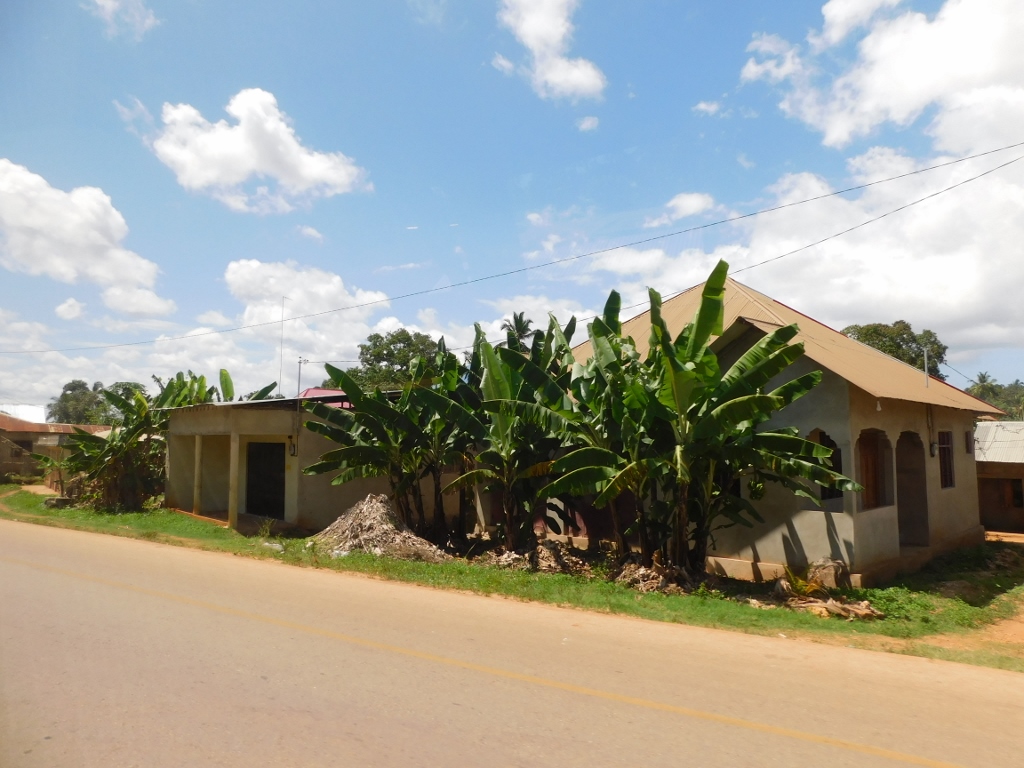 Sights alongside the road on the island of Unguja (Zanzibar)
Sights alongside the road on the island of Unguja (Zanzibar)
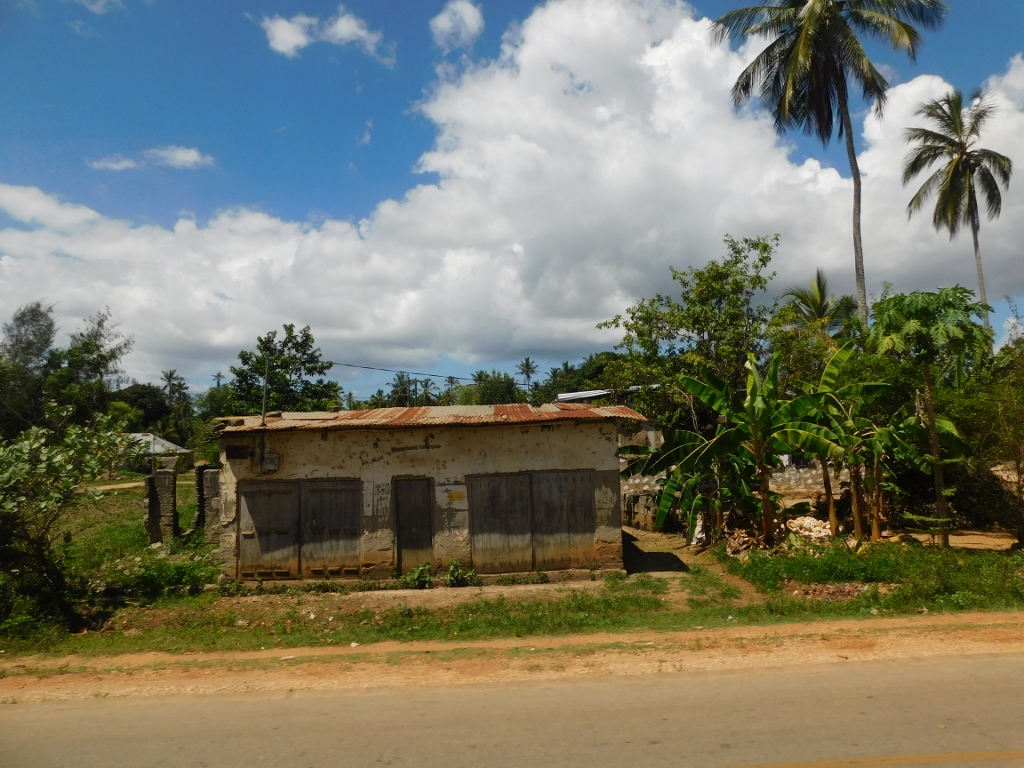 Sights alongside the road on the island of Unguja (Zanzibar)
Sights alongside the road on the island of Unguja (Zanzibar)
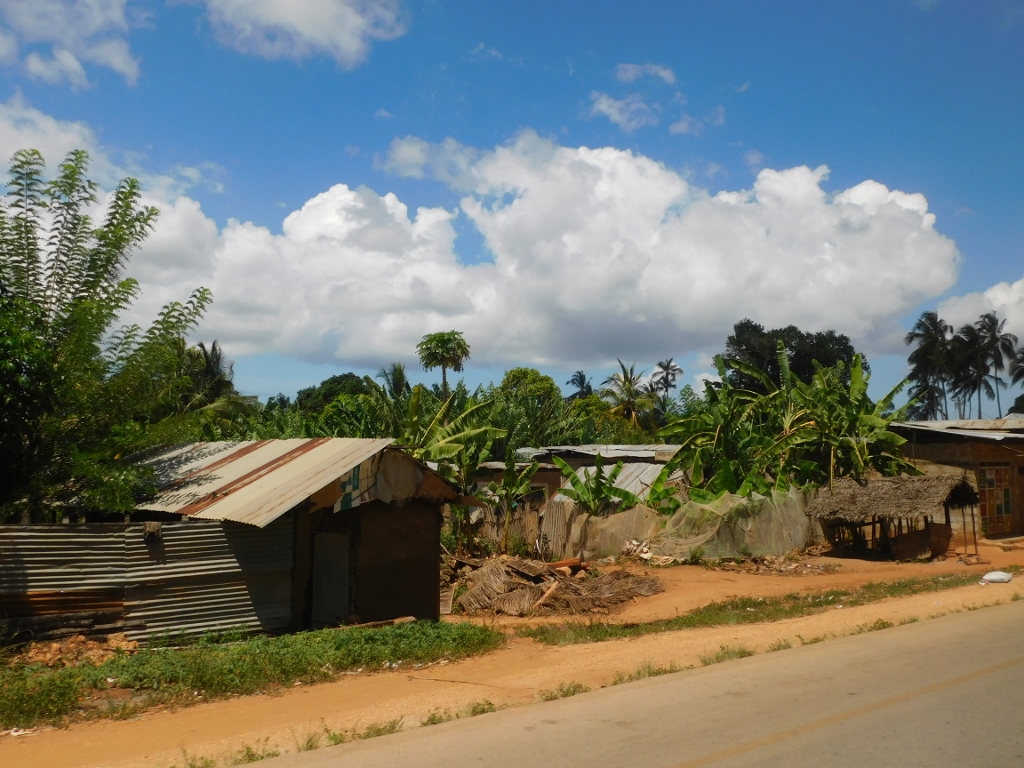 Sights alongside the road on the island of Unguja (Zanzibar)
Sights alongside the road on the island of Unguja (Zanzibar)
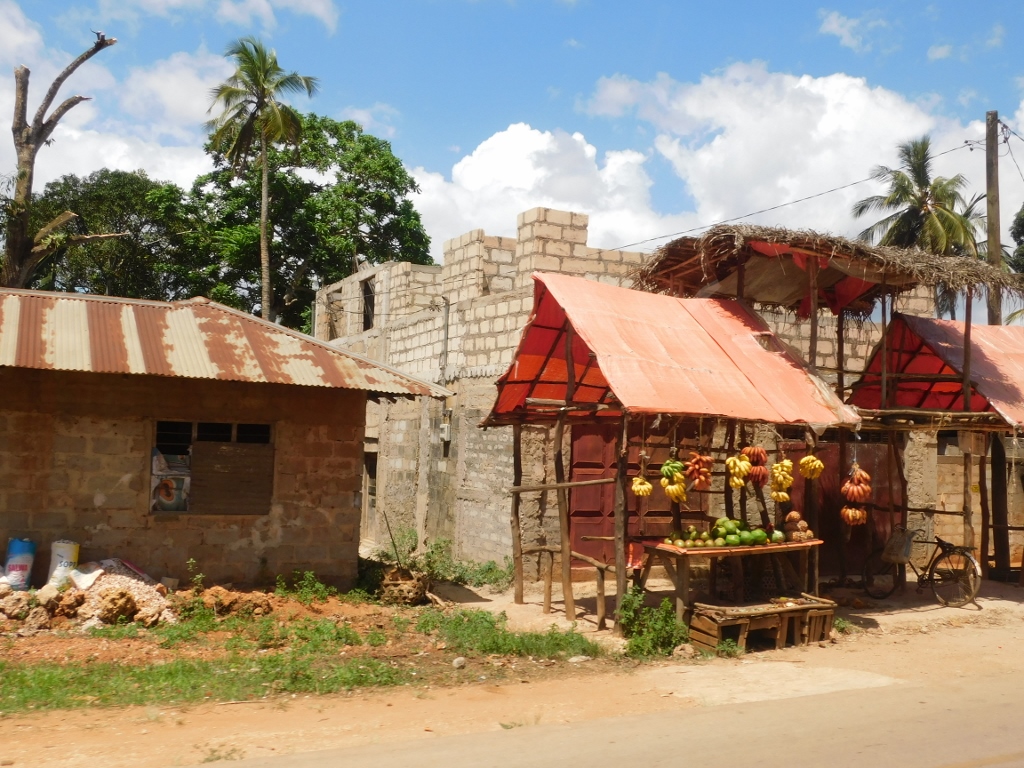 Sights alongside the road on the island of Unguja (Zanzibar)
Sights alongside the road on the island of Unguja (Zanzibar)
As it can be seen from the photos, some of the houses are old and look run down, but you can also see that new houses are being built. In recent years, Zanzibar has experienced rapid development due to tourism and its increasing popularity as a holiday destination and this is reflected in the standard of living of the local population. Besides the beautiful beaches, Zanzibar also has very lush vegetation all over the island and I enjoyed those details that I could see from the coach.
 Sights alongside the road on the island of Unguja (Zanzibar)
Sights alongside the road on the island of Unguja (Zanzibar)
When you follow the main road that leads from north to south, you also pass through the village of Kinyasini, where there is a large market. I passed there several times and every time it was crowded, so it’s quite clear that this is a very popular market in this part of the island.
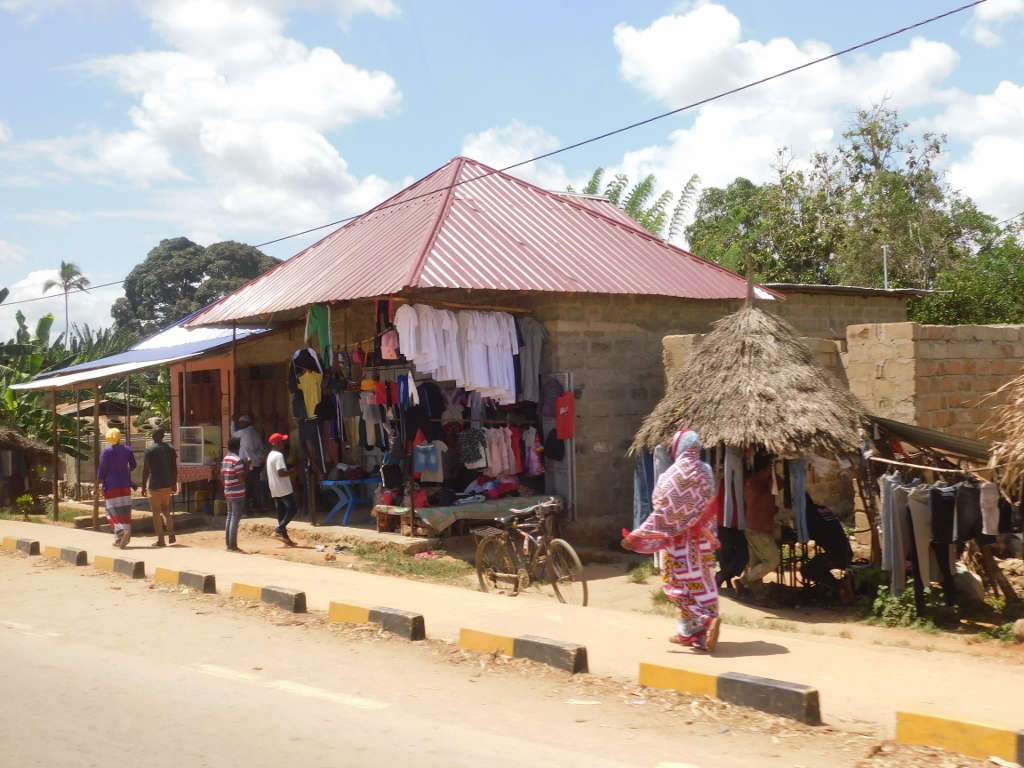 Getting close to the big market in the village of Kinyasini
Getting close to the big market in the village of Kinyasini
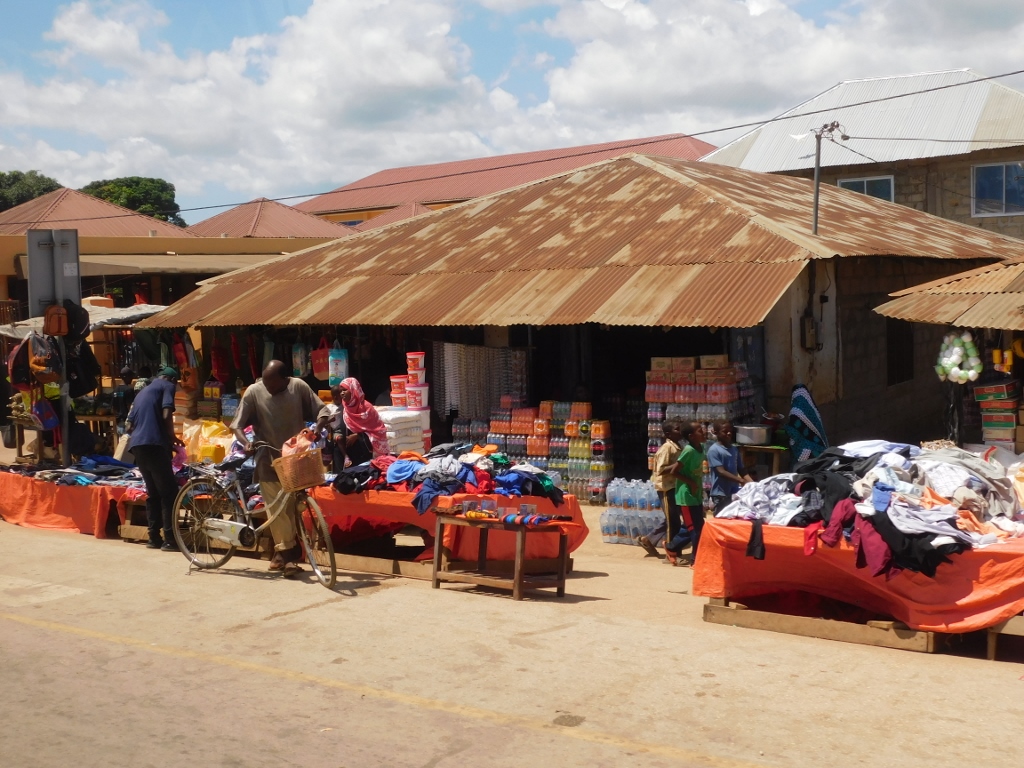 Market in the village of Kinyasini
Market in the village of Kinyasini
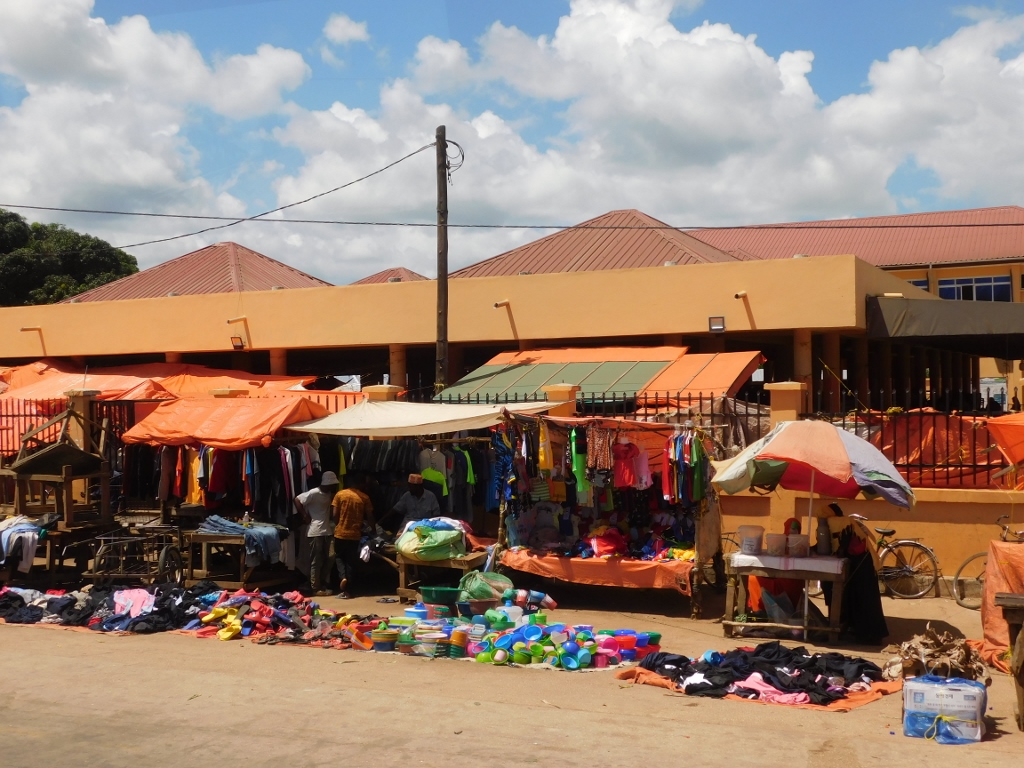 Market in the village of Kinyasini
Market in the village of Kinyasini
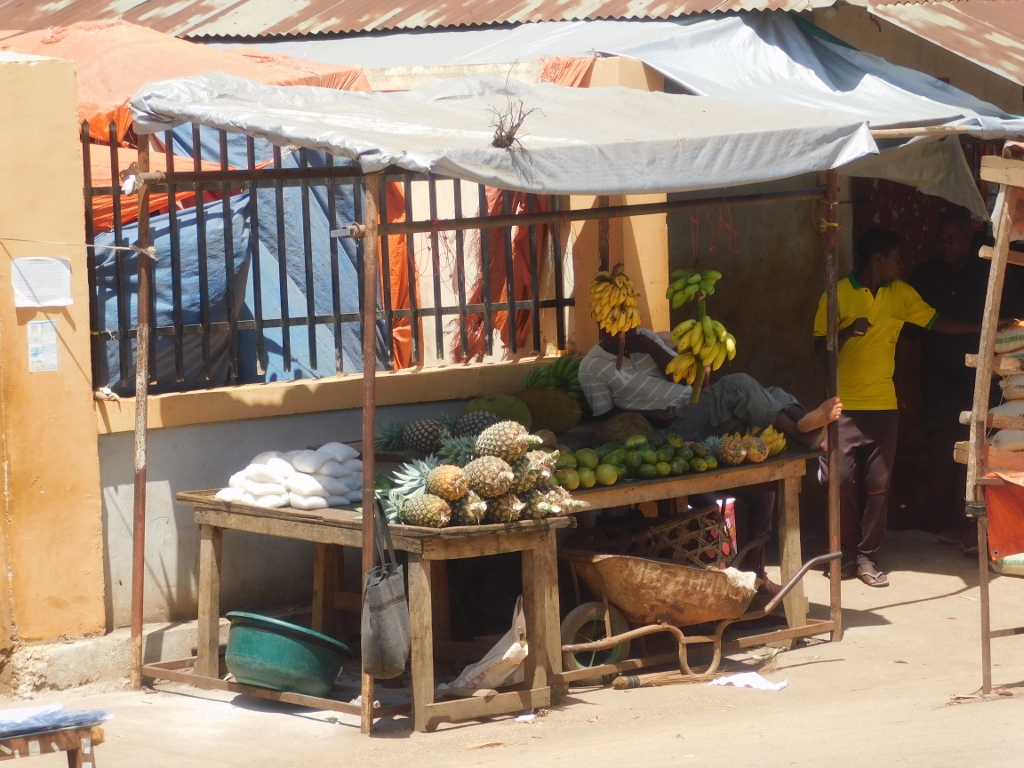 Market in the village of Kinyasini
Market in the village of Kinyasini
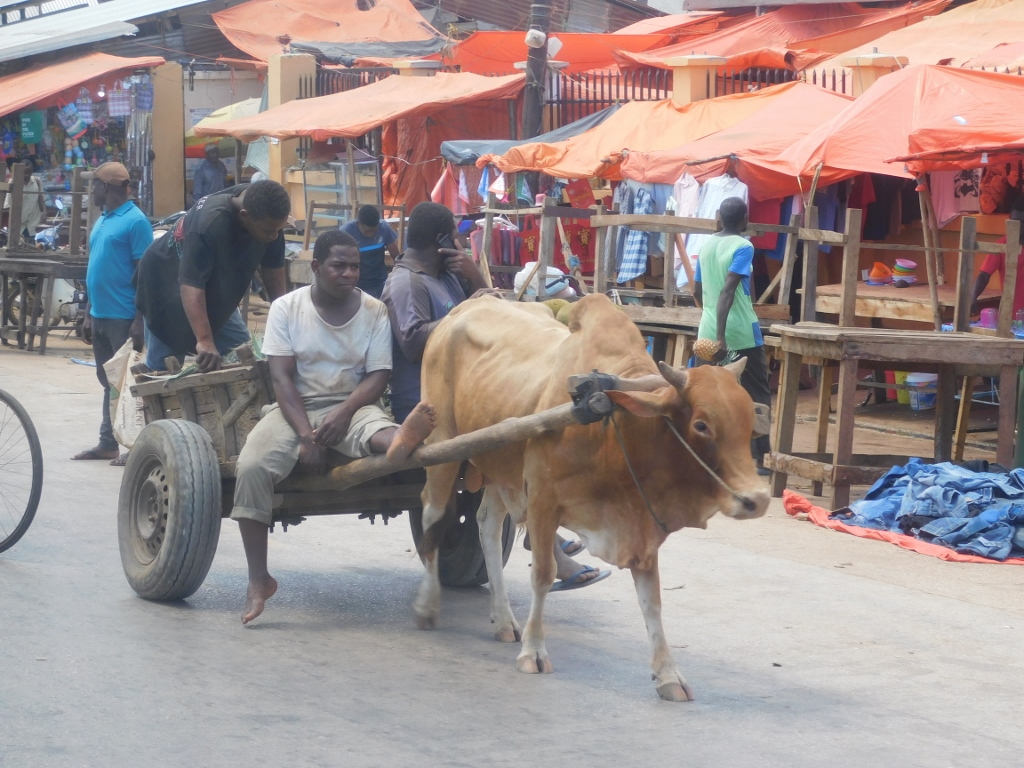 Market in the village of Kinyasini
Market in the village of Kinyasini
However, when you turn to the “side” roads and enter more into the centre of the island, you can occasionally see large fields often covered with sugar cane or rice, and bordered by palm forests. Of course, I don’t understand the crop rotation system in Zanzibar, so I don’t know which crop matures when, but I’m sure that the fields that can be seen in the next picture were not standing there idly.
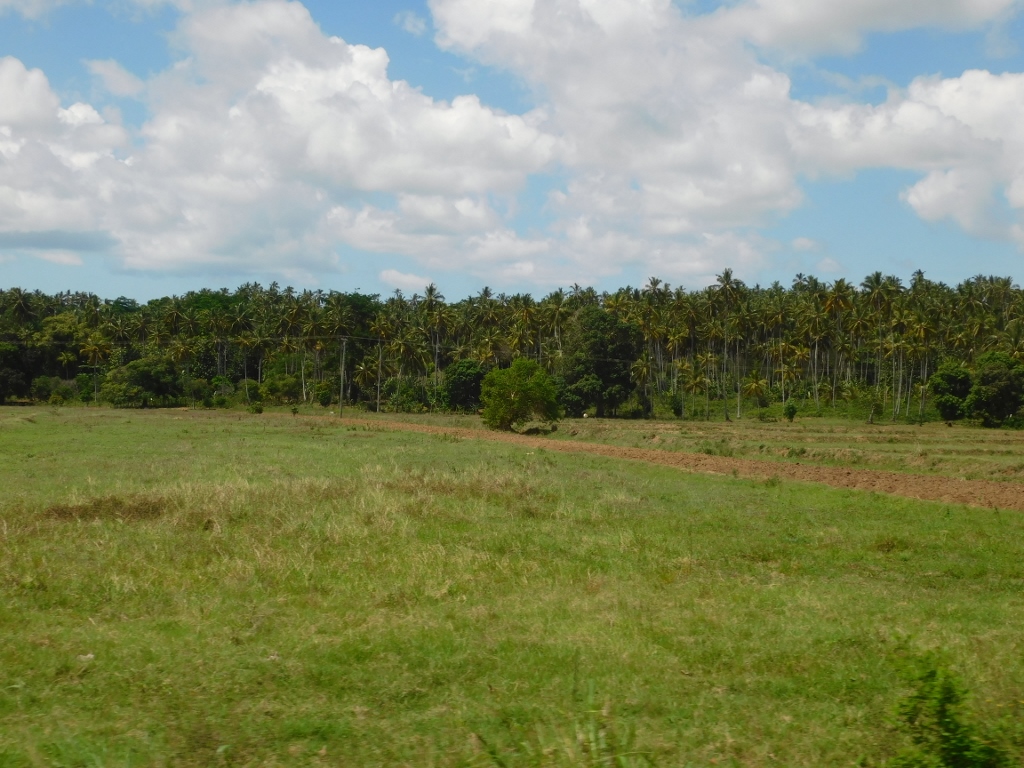 Interior of the island of Unguja
Interior of the island of Unguja
Those side roads also lead through smaller settlements or by scattered farmsteads and there you can often see mango, banana, papaya trees... At least that’s what I could easily recognise from the coach.
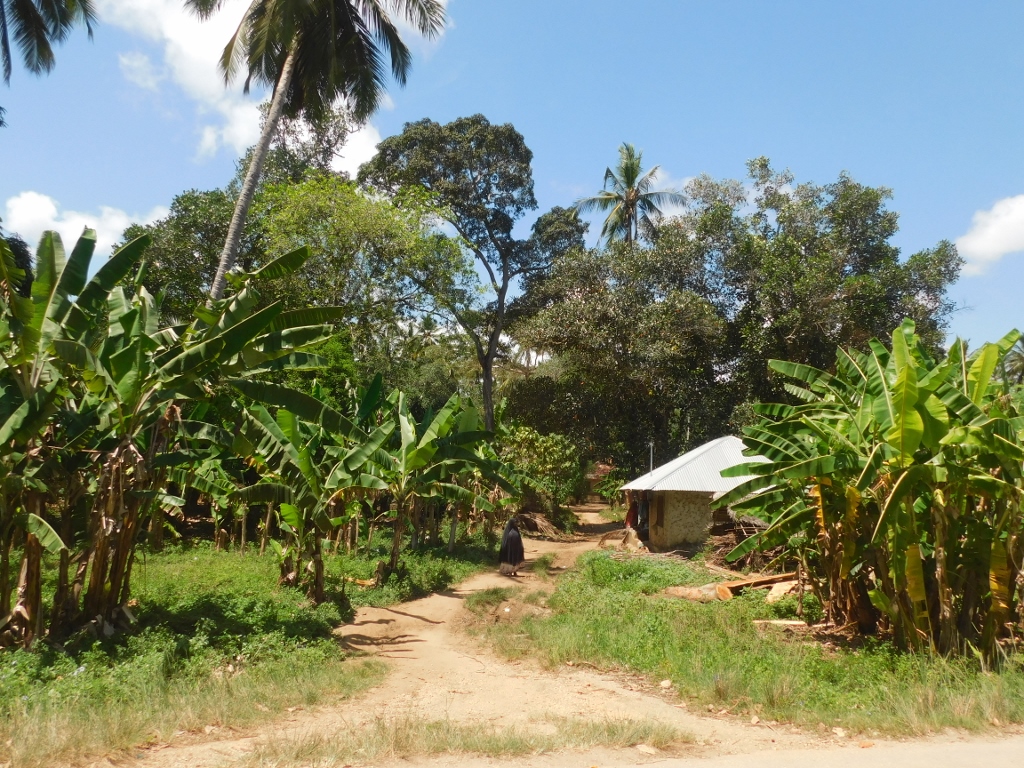 Interior of the island of Unguja
Interior of the island of Unguja
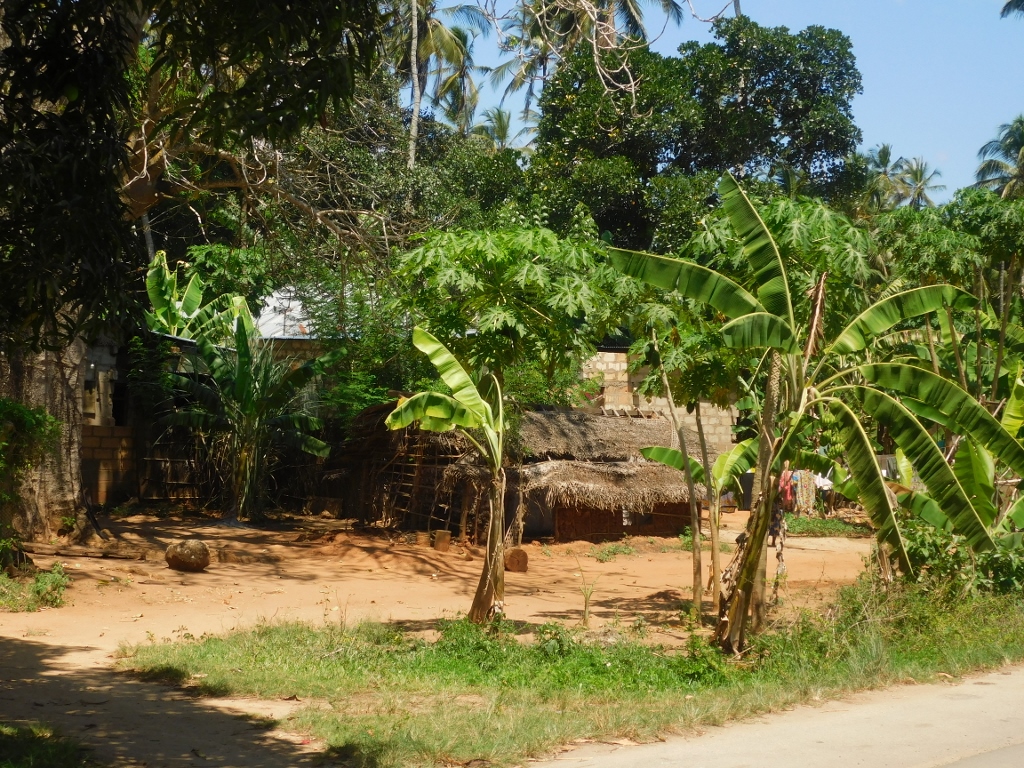 Interior of the island of Unguja
Interior of the island of Unguja
Very often, you can see stalls selling freshly picked fruits and vegetables in front of houses and properties.
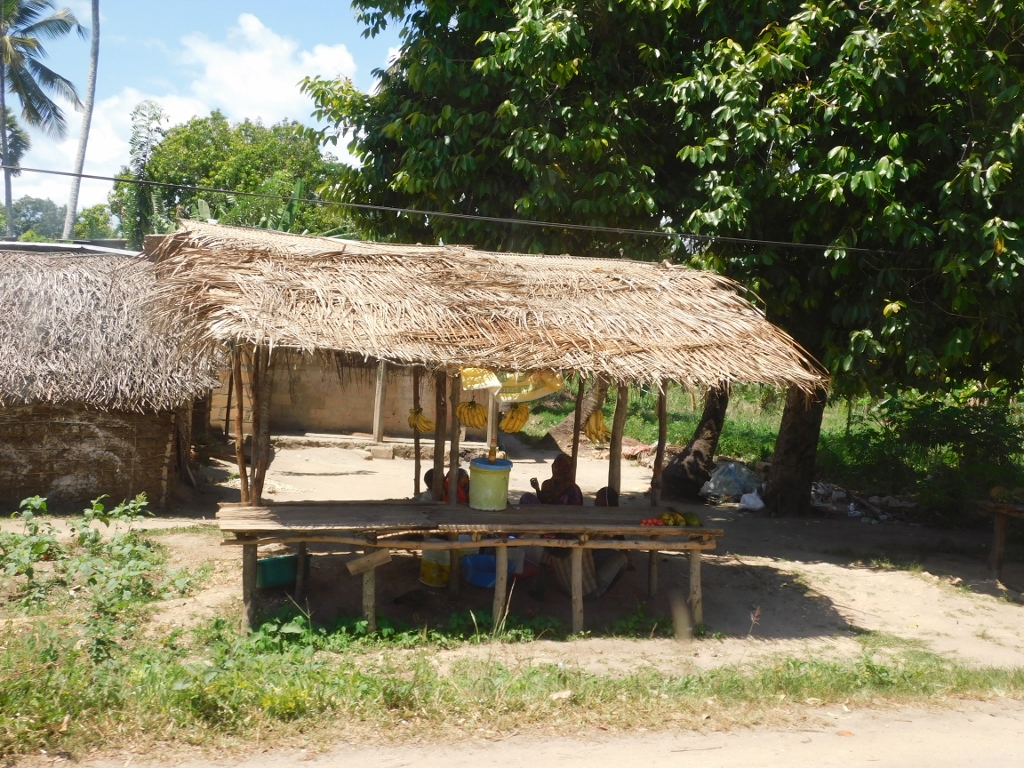 Interior of the island of Unguja
Interior of the island of Unguja
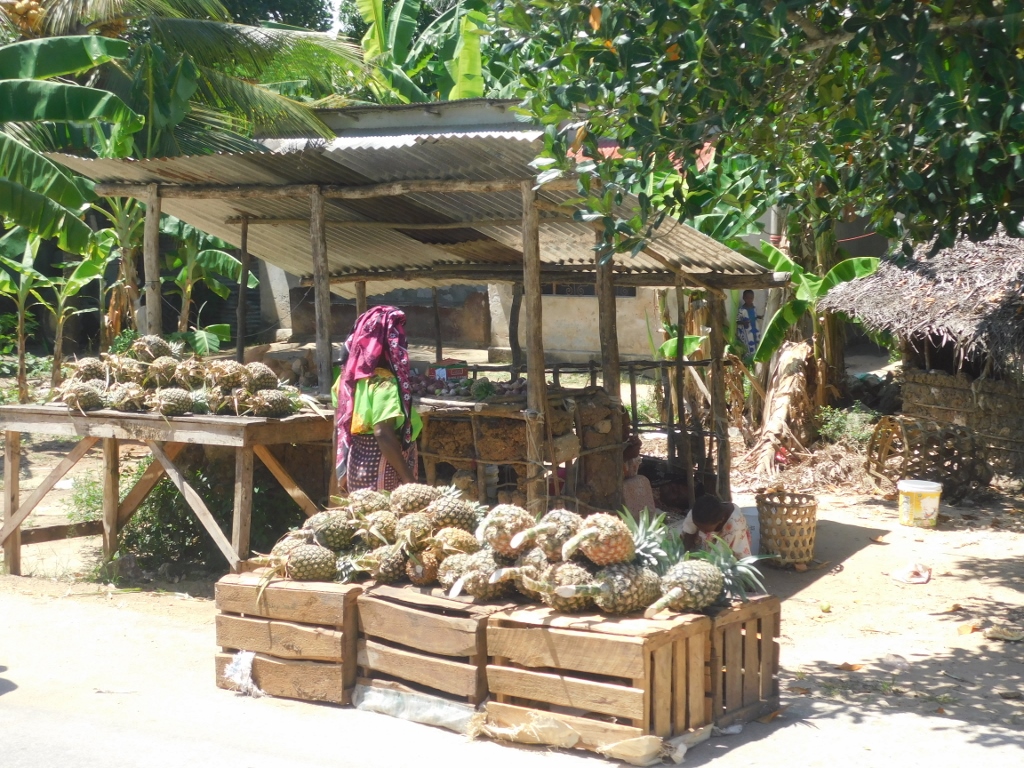 Interior of the island of Unguja
Interior of the island of Unguja
But, fruit and vegetable stalls can also be seen in somewhat larger, more urban settlements, such as Paje, which we passed through again, while various other sights could also be seen there.
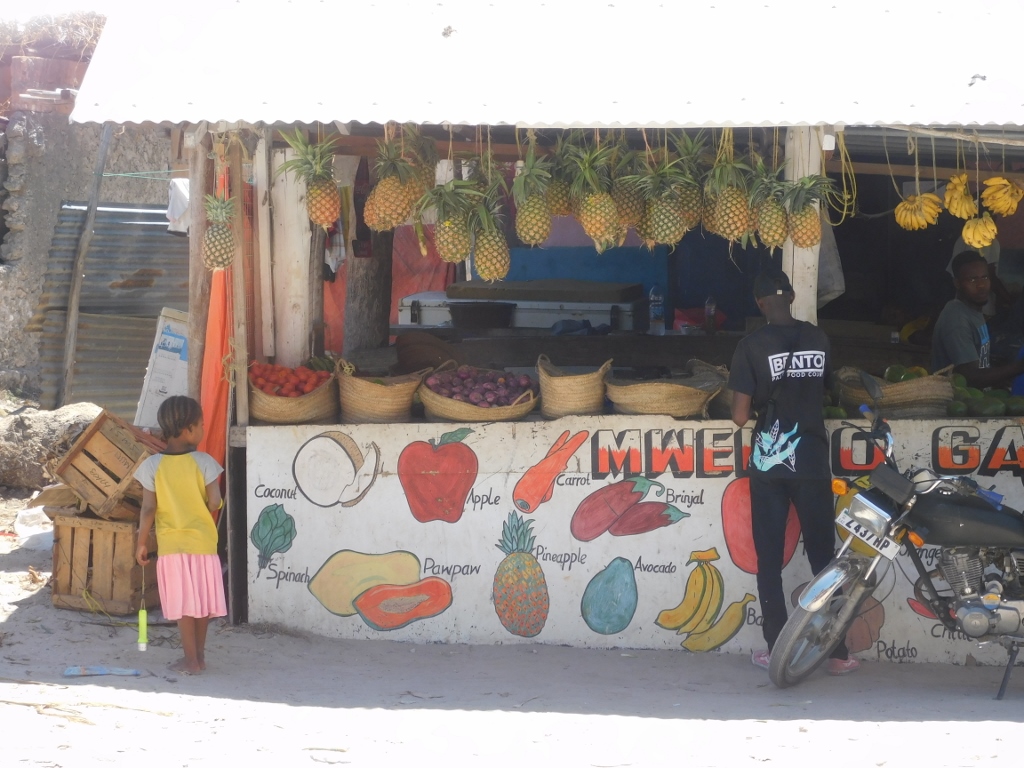 Sight from the village of Paje
Sight from the village of Paje
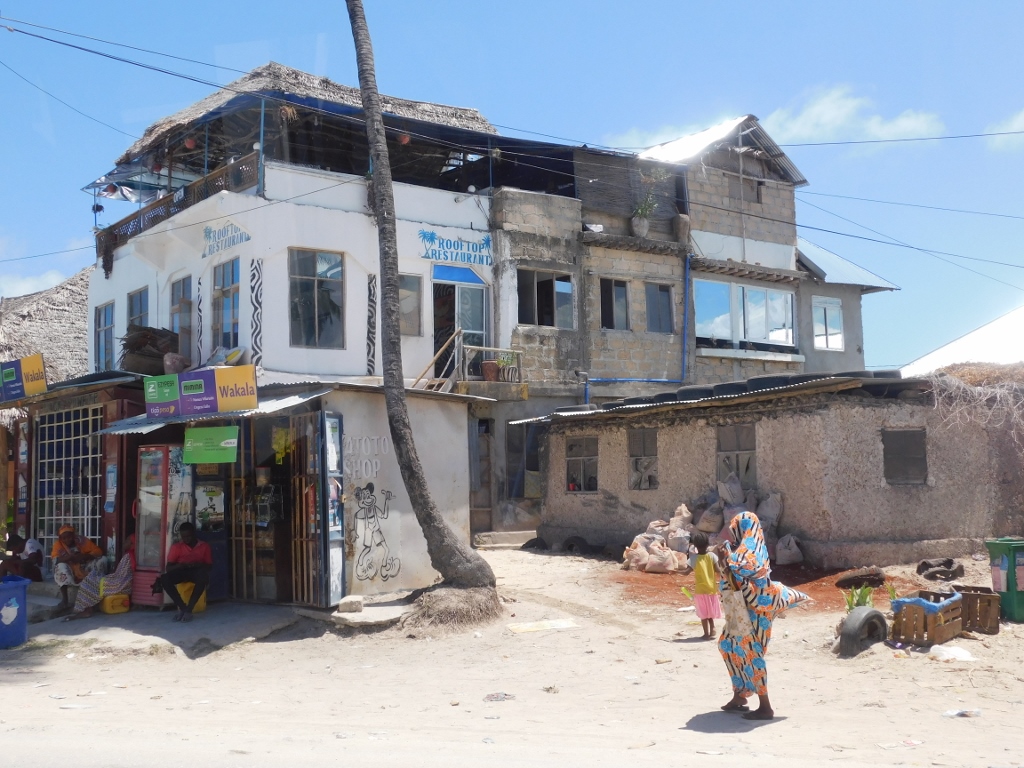 Sight from the village of Paje
Sight from the village of Paje
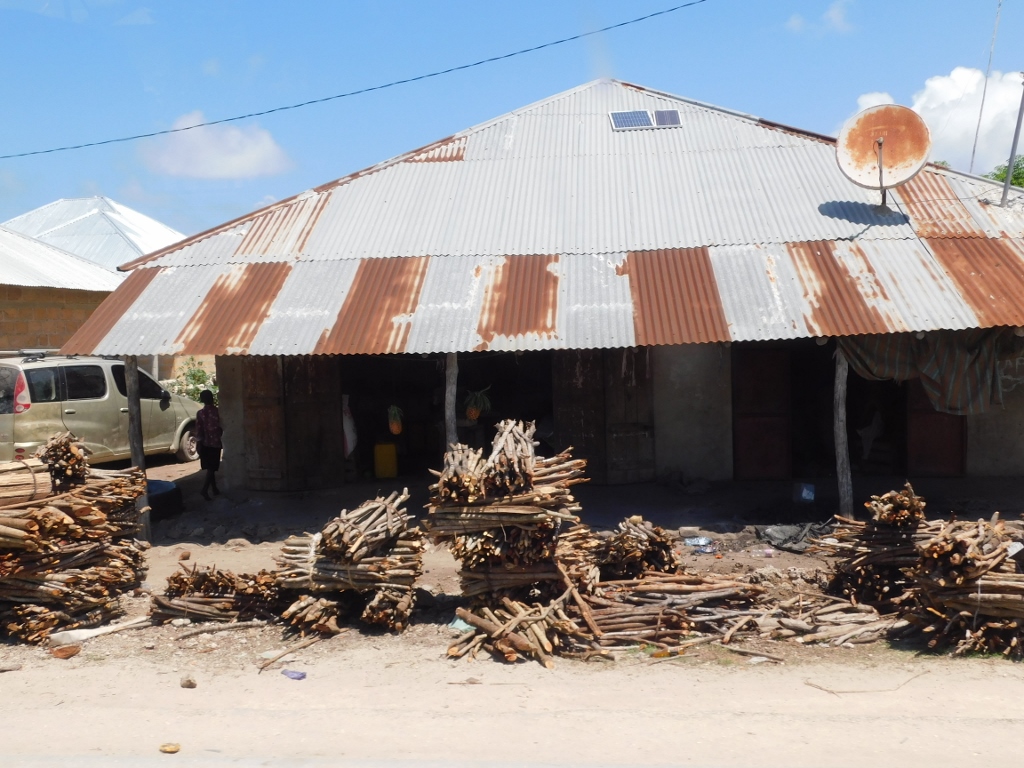 Sight from the village of Paje
Sight from the village of Paje
On this day, we first went to the east coast of the island, specifically to the east coast of the Michamvi peninsula and the beach that is a part of the village of Pingwe. Here is the map again that shows which places are mentioned in my stories.
At the beach in the village of Pingwe, we were supposed to go snorkelling and in order to do that, we got off the coach right by a section where the locally famous restaurant “The Rock” is located.
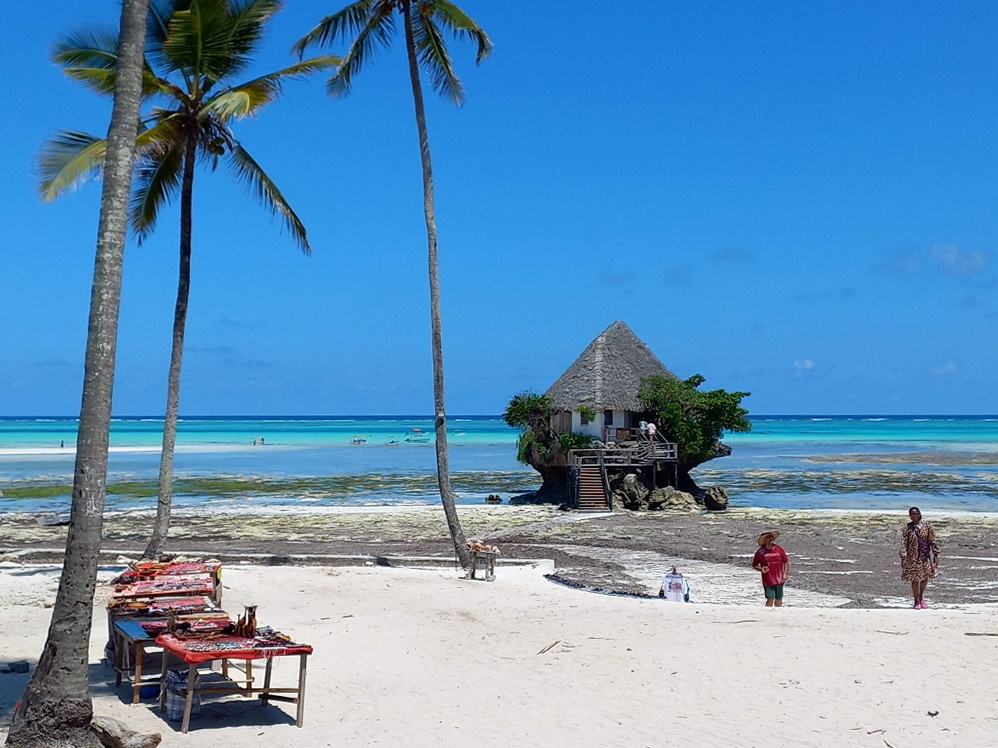 The Rock restaurant at the beach in the village of Pingwe
The Rock restaurant at the beach in the village of Pingwe
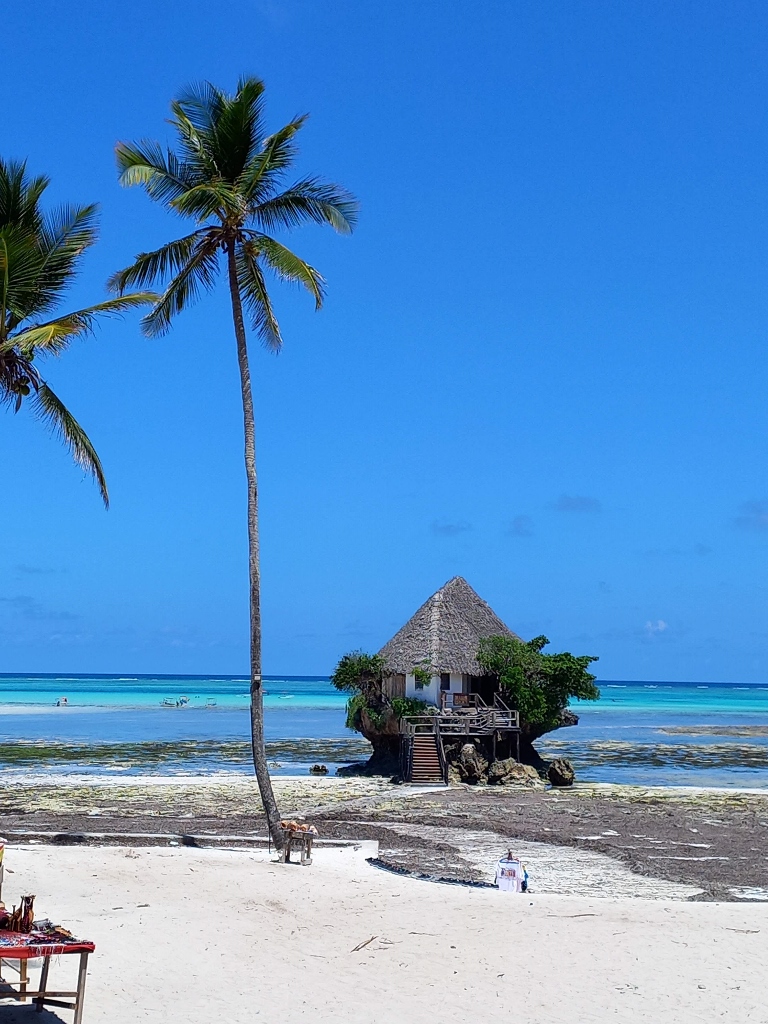 The Rock restaurant at the beach in the village of Pingwe
The Rock restaurant at the beach in the village of Pingwe
Once you see the restaurant, it’s quite clear how it got its name. Namely, it was built on the top of a large rock that exists here. At the time when we arrived, it was low tide, so the restaurant could be approached on foot even across dry land and almost the entire shore was covered with dried seaweed.
 The Rock restaurant and the beach in the village of Pingwe during low tide
The Rock restaurant and the beach in the village of Pingwe during low tide
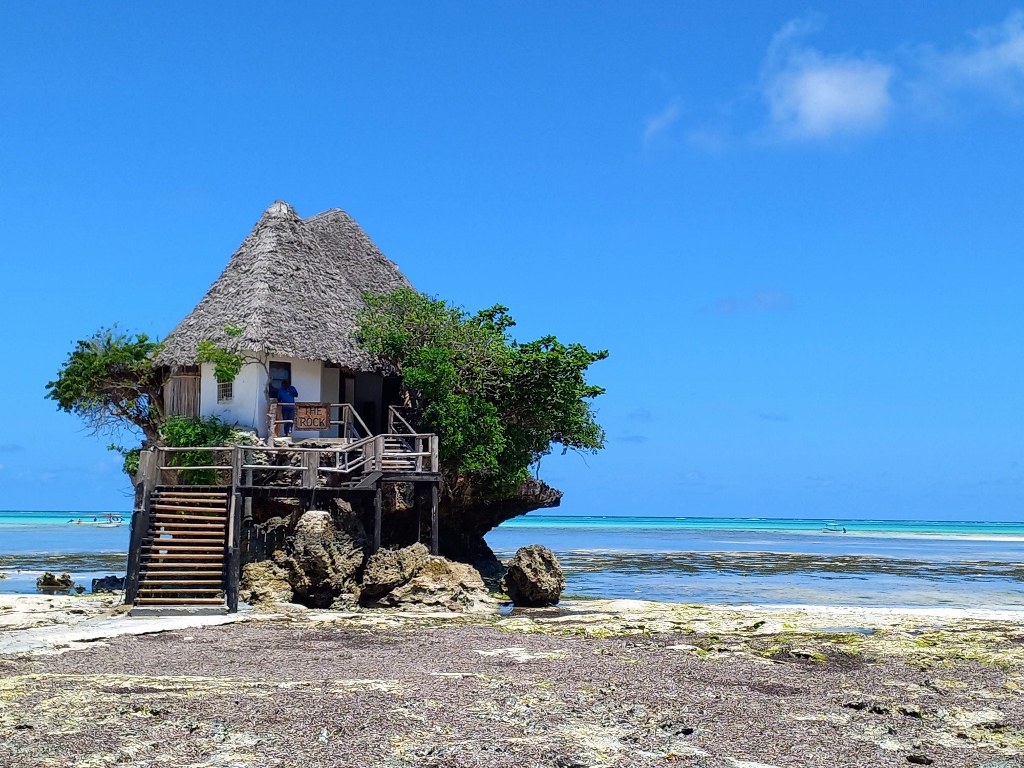 The Rock restaurant and the beach in the village of Pingwe during low tide
The Rock restaurant and the beach in the village of Pingwe during low tide
As far as I understand, since the restaurant is quite popular and not very big, it is necessary to reserve a place in advance, but we as a group were not even interested in that. On the other hand, I believe that the view of the beach is more beautiful with the rock and the restaurant in the picture, than when it is all viewed from the restaurant itself.
From the shore, regardless of the tide, we could see the wonderful waters of the Indian Ocean in the distance which beckoned with their marvellous colour and, anyway, the plan was to go snorkelling by boat. Despite the pronounced receding of the water at low tide, both local residents and tourists often use precisely such circumstances for various activities – some to play football on the bare beach, some to walk a little in the shallow water that has lingered in some places, and some (usually local residents) with bags on their shoulders to “catch” something in the shallows. Maybe an octopus accidentally trapped by the tide. Who knows...
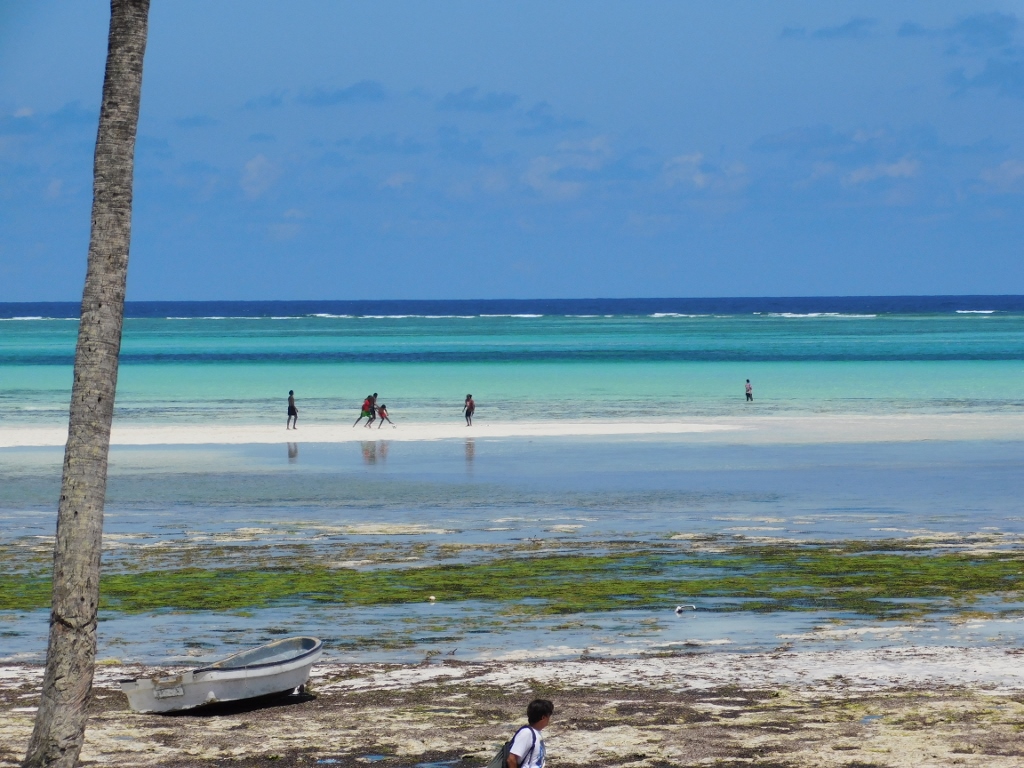 Beach in the village of Pingwe during low tide
Beach in the village of Pingwe during low tide
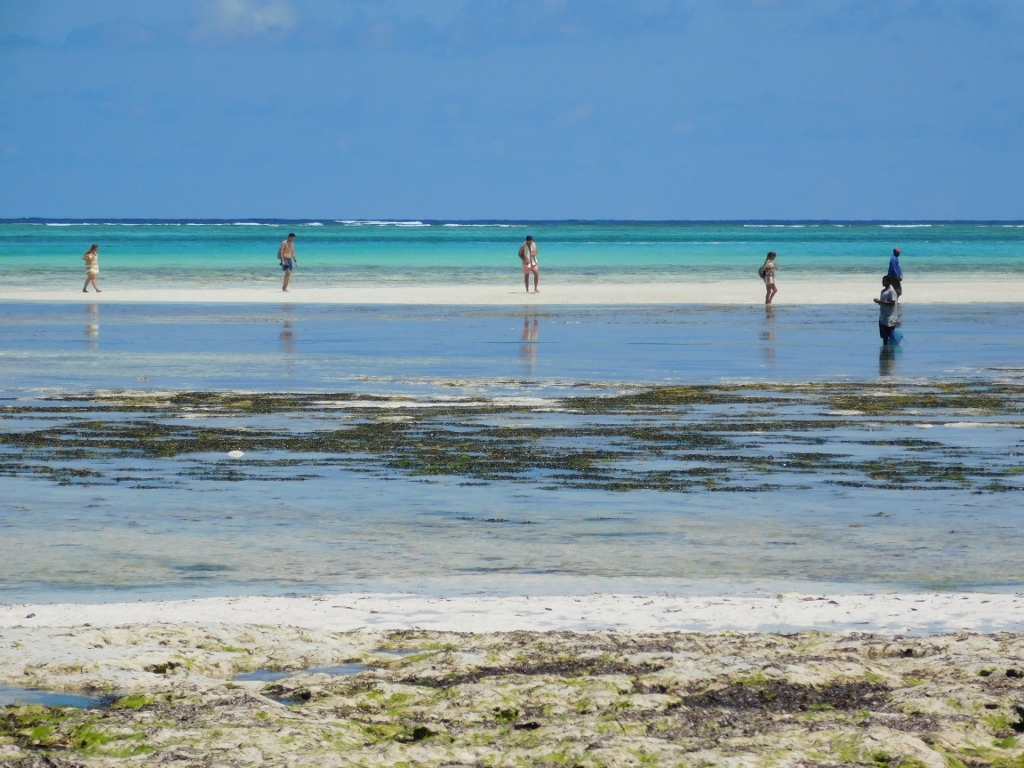 Beach in the village of Pingwe during low tide
Beach in the village of Pingwe during low tide
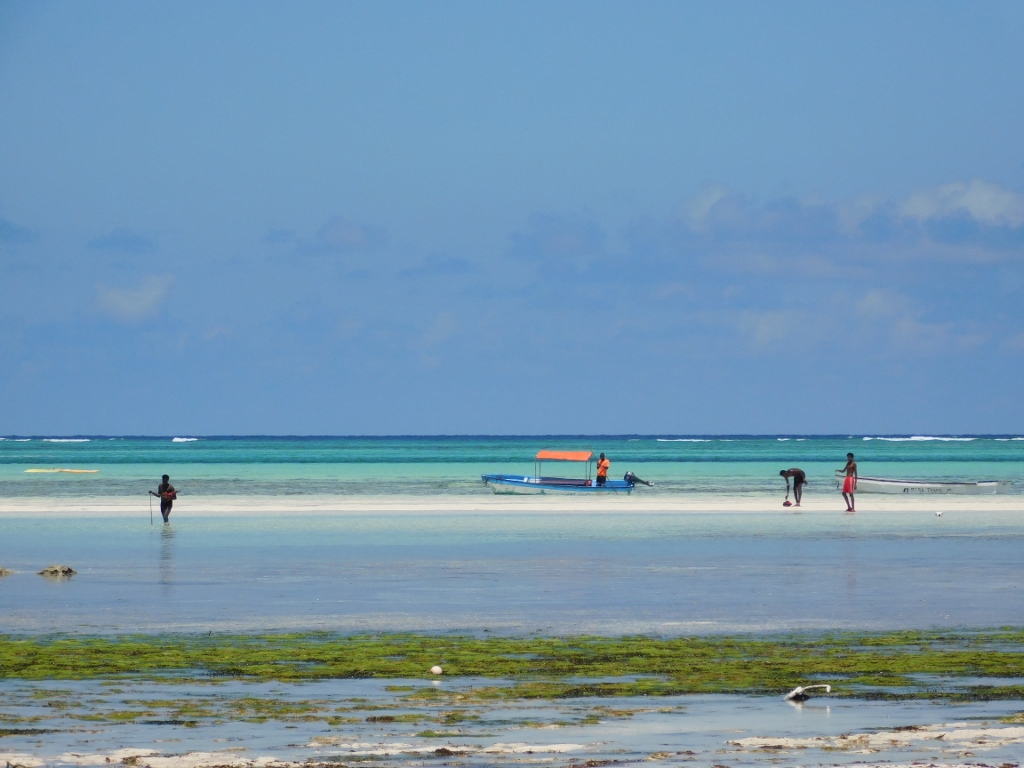 Beach in the village of Pingwe during low tide
Beach in the village of Pingwe during low tide
As for us, it was necessary to go through the shallows to a couple of boats that were similar to the one shown in the photo below.
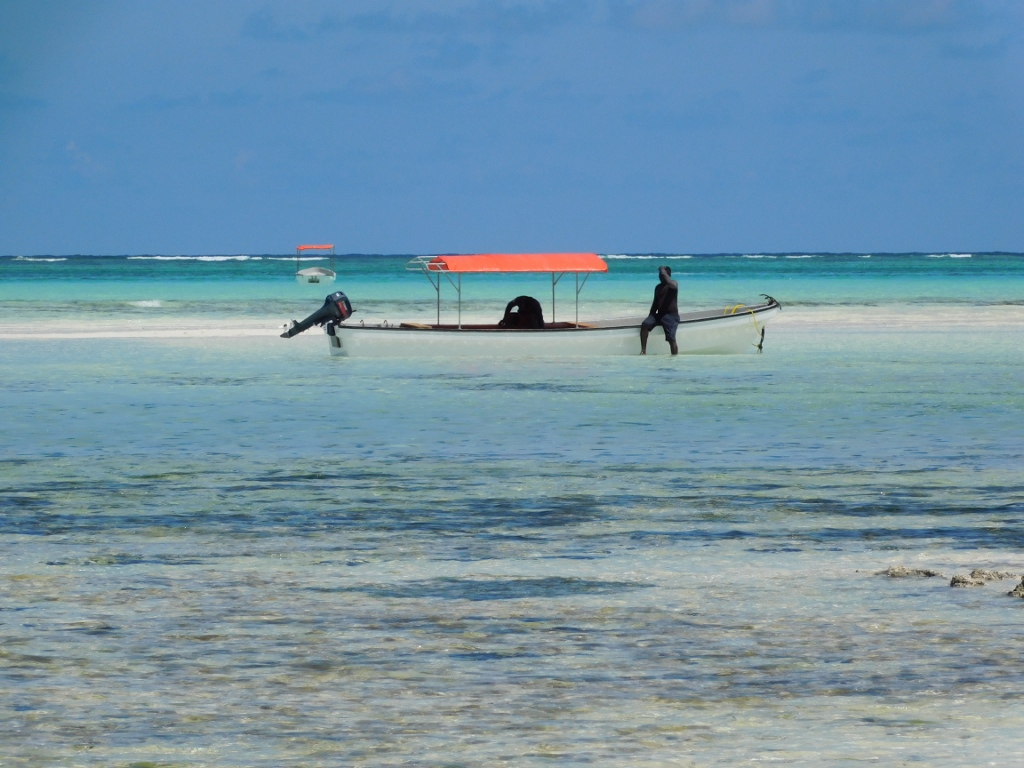 Beach in the village of Pingwe during low tide
Beach in the village of Pingwe during low tide
Here, it is very important to be careful where you walk and it is also recommended to wear water shoes on your feet. The reason? Well, after boarding the boats, we first passed through a stretch of shallow water where numerous sea urchins could clearly be seen. It is not good at all if a person steps on them.
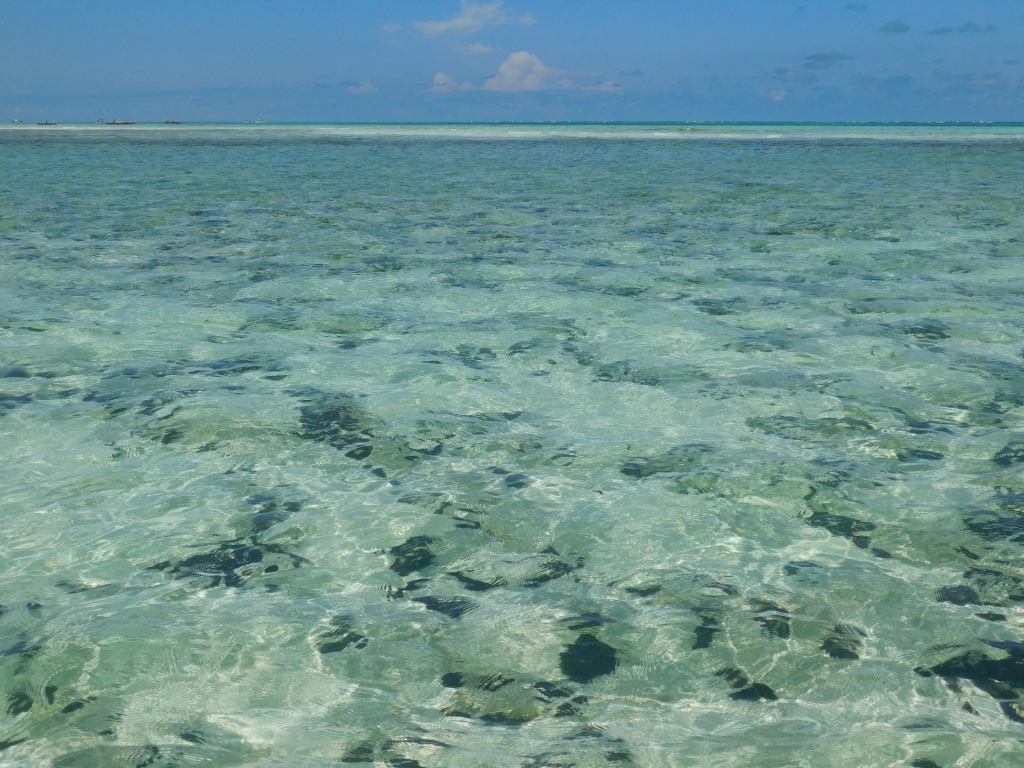 Sea urchins along the beach in the village of Pingwe
Sea urchins along the beach in the village of Pingwe
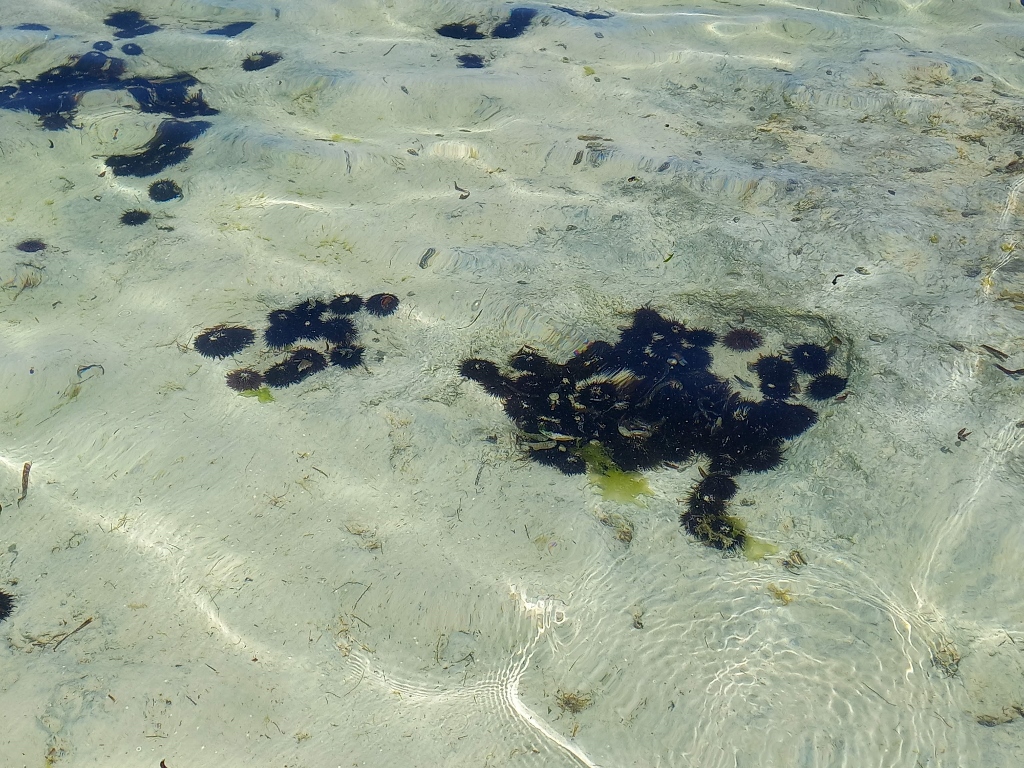 Sea urchins along the beach in the village of Pingwe
Sea urchins along the beach in the village of Pingwe
But the fantastically clear and clean water, as well as the colours that could be seen a little further away, made me look forward to our getting to a place with a higher concentration of starfish that we were going to see. Who cares about sea urchins when we’ve been sailing safely over them anyway.
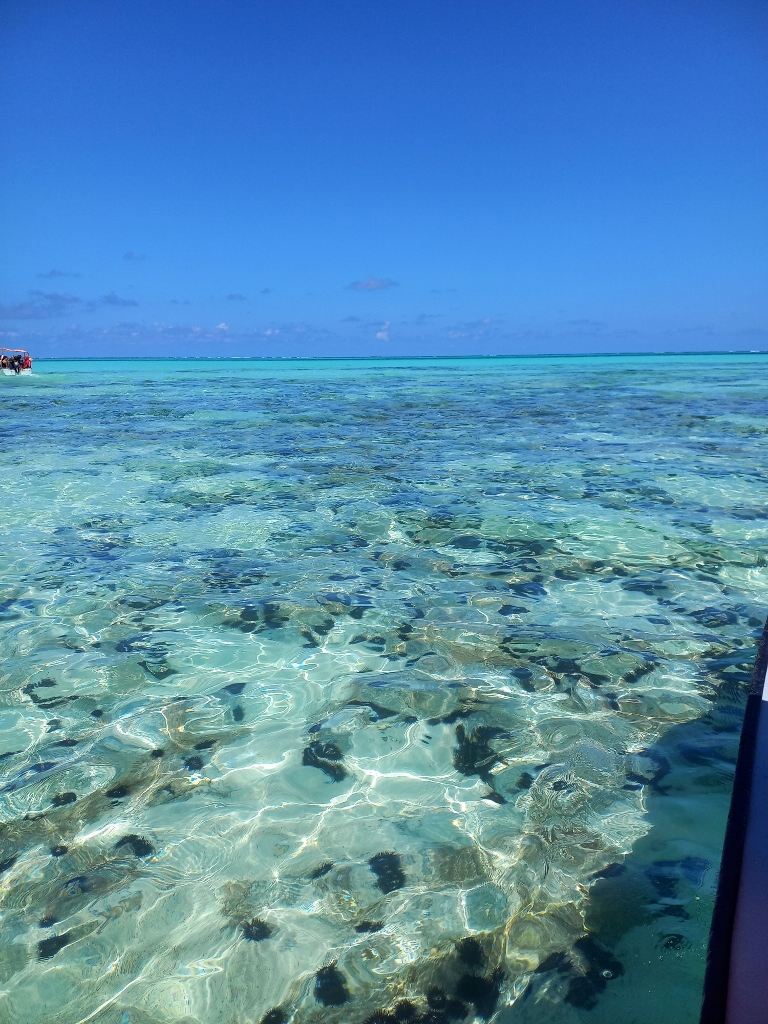 Sea urchins along the beach in the village of Pingwe
Sea urchins along the beach in the village of Pingwe
Very quickly we came to a part where you could only see white sand at the bottom. Please note a detail in the next photo where on the left-hand side and below you can clearly see the rippled sand on the seabed. It just illustrates how clean and clear the water was here.
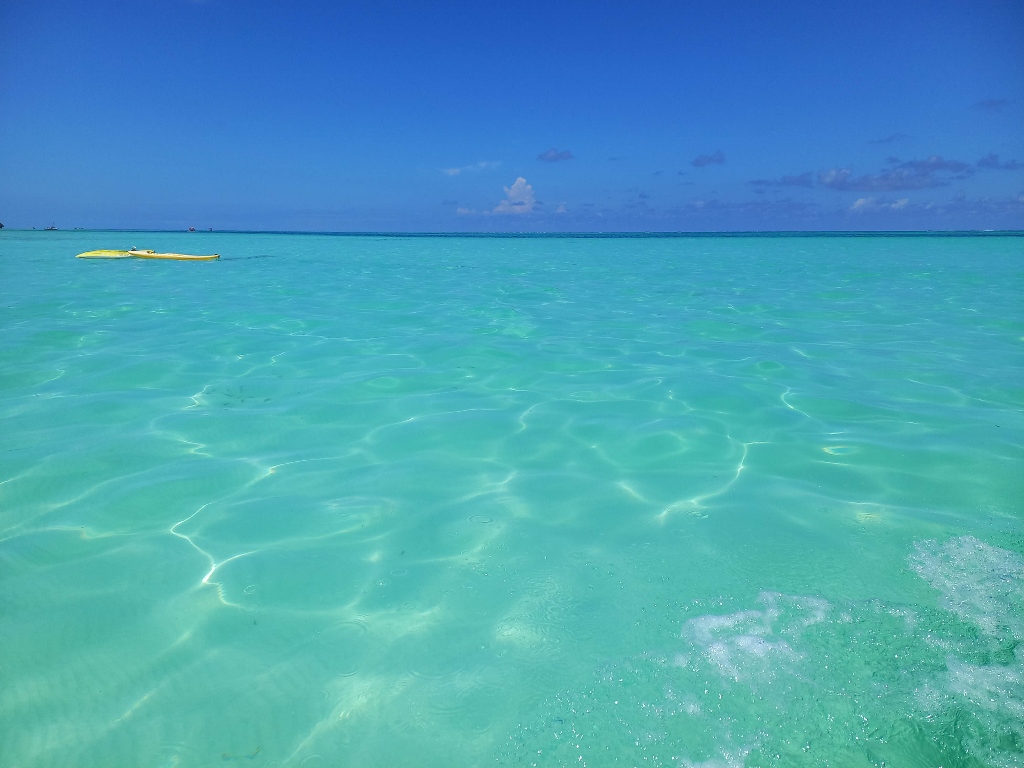 The Indian Ocean at the beach in the village of Pingwe
The Indian Ocean at the beach in the village of Pingwe
We sailed by boat for some ten minutes and then we stopped to snorkel and watch starfish. The water depth was a little over two meters.
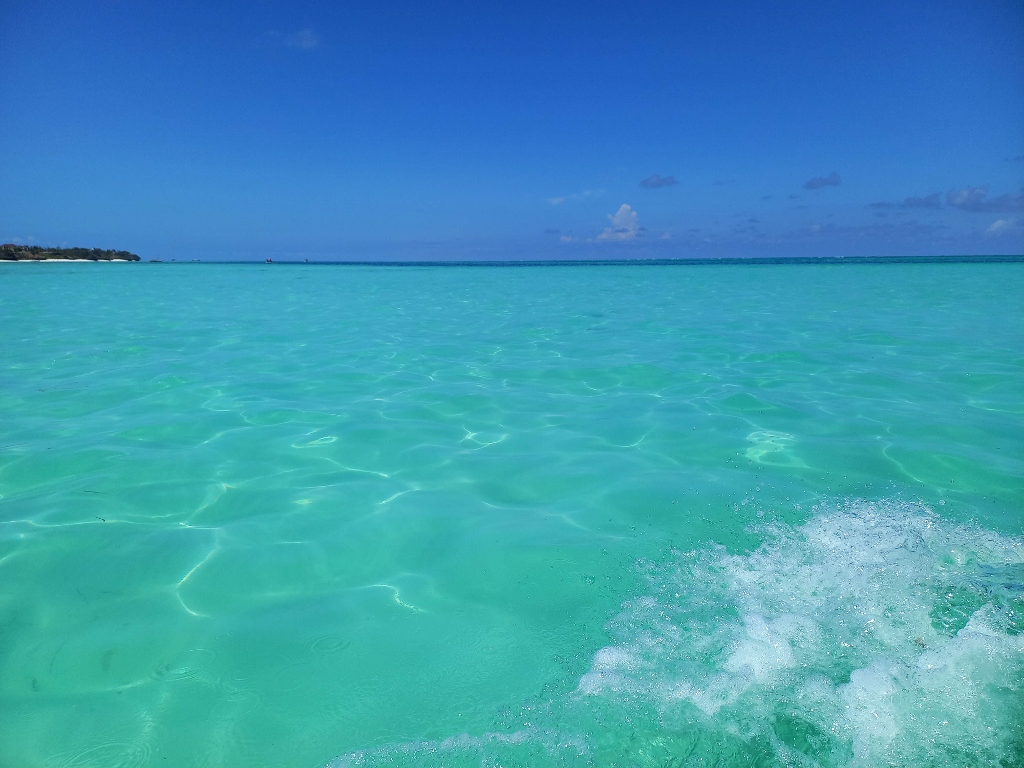 The Indian Ocean at the beach in the village of Pingwe
The Indian Ocean at the beach in the village of Pingwe
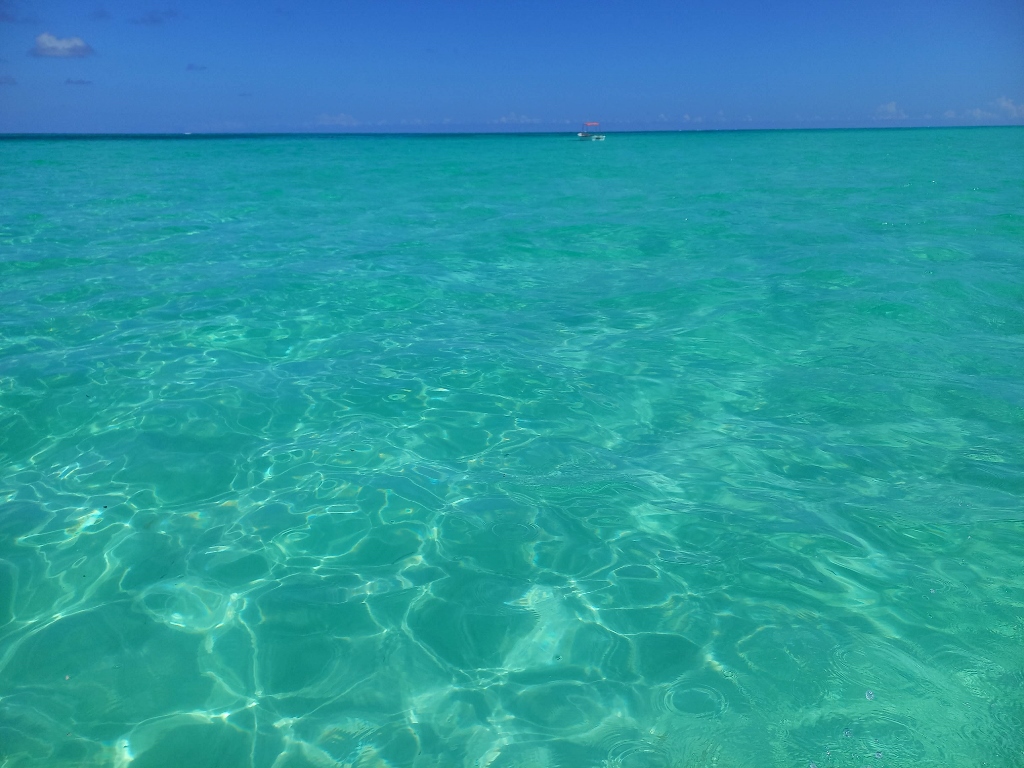 The Indian Ocean at the beach in the village of Pingwe
The Indian Ocean at the beach in the village of Pingwe
The agreement was that we could bring a starfish to the surface for a short time to have a photo with it taken, but that we had to return it immediately to the water. It suited me perfectly. I am very grateful to lovely Marina from the group who took a picture of me at just such a moment.
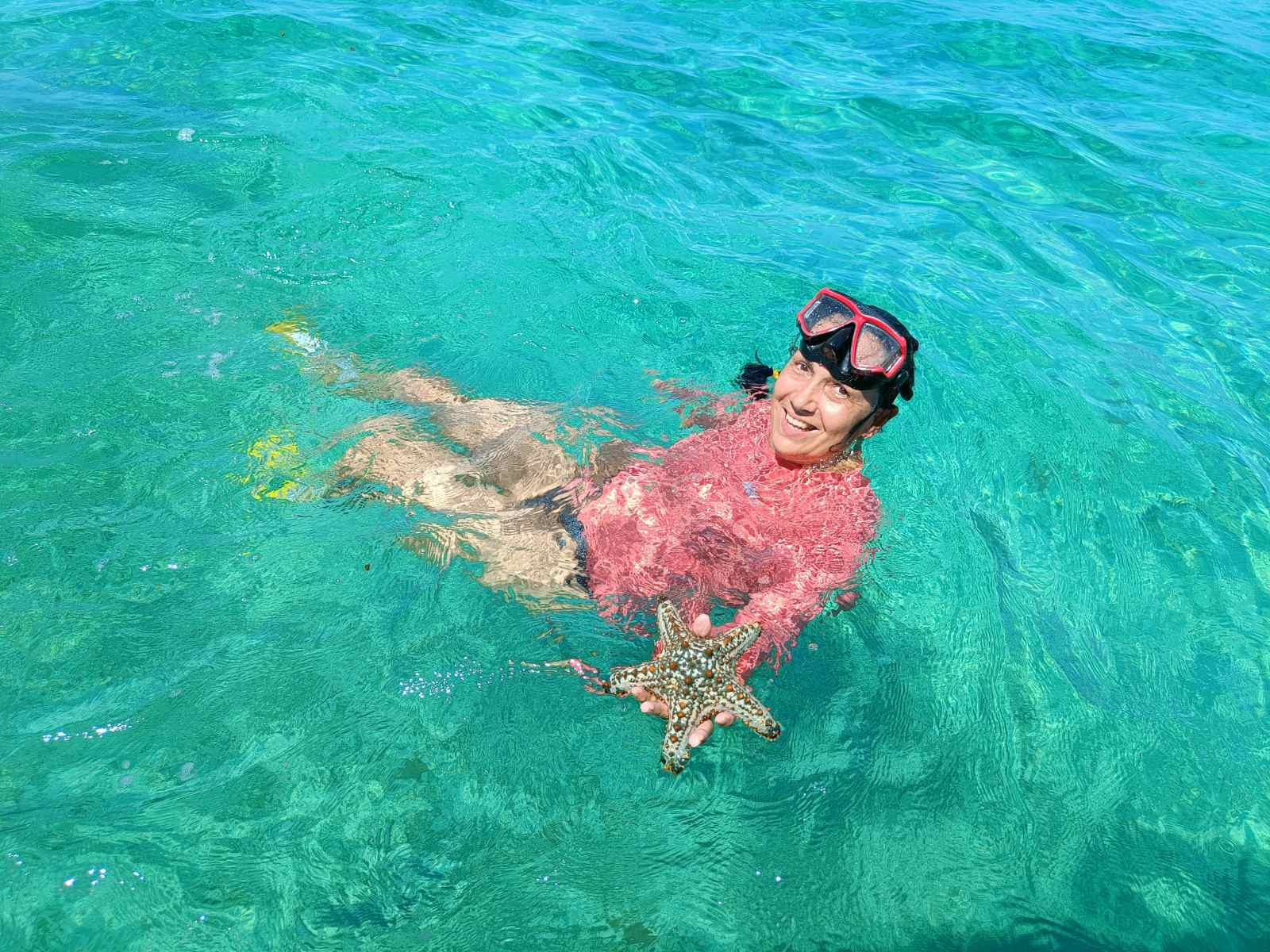 An exceptionally beautiful starfish in my hand (Photo by: MI)
An exceptionally beautiful starfish in my hand (Photo by: MI)
When I got back to the boat, I continued to take photos of the coast, that is, of the beach in the village of Pingwe where parts of a hotel could also be seen.
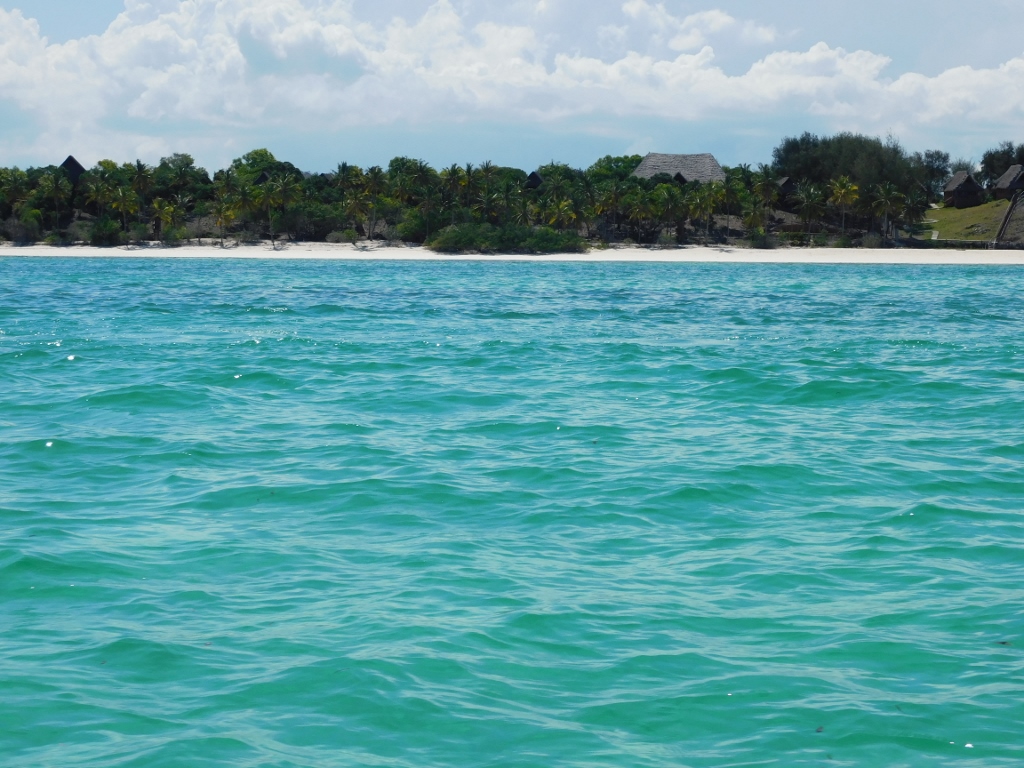 Part of the coast in the village of Pingwe
Part of the coast in the village of Pingwe
We soon got back to “The Rock” restaurant and in the meantime the tide had already started to go up, so the visitors of the restaurant now had to go through the water to reach it. The black details in the front in the next photo should not be confusing. As unattractive as it may seem, it’s just torn away and harmless seaweed.
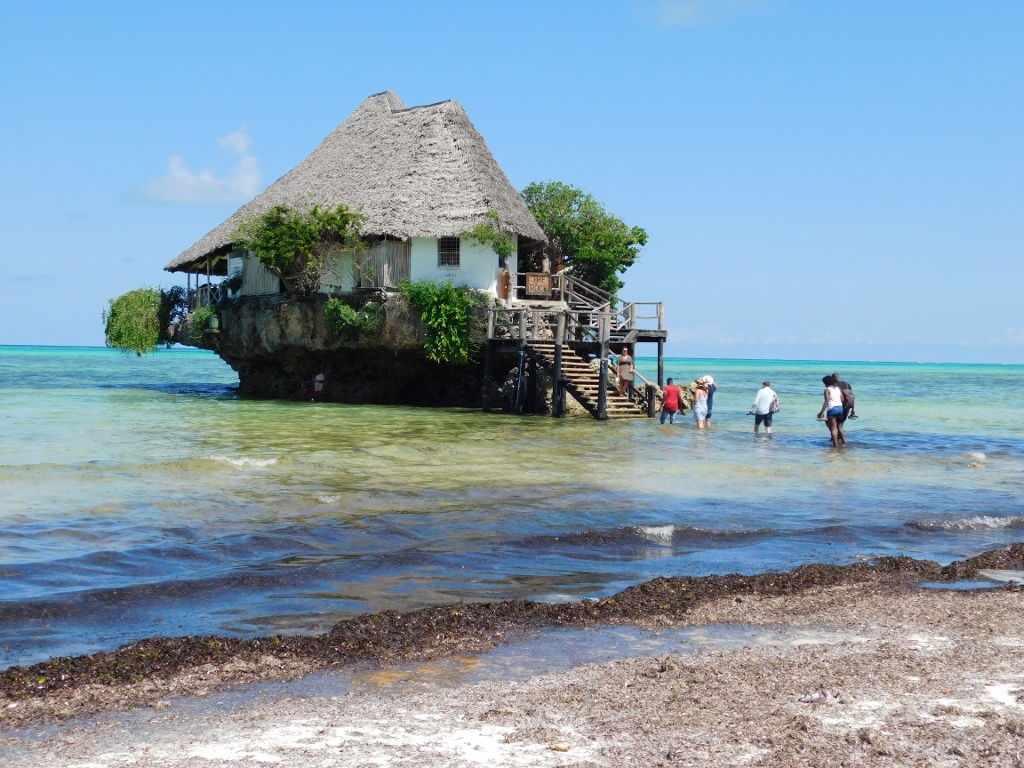 The Rock restaurant at the beach in the village of Pingwe
The Rock restaurant at the beach in the village of Pingwe
Now the whole group that I was a member of went to a nearby hotel restaurant where we had lunch. I used my free time to take some more photos, but the food I ordered arrived soon, so I stopped with my taking of pictures and went to eat.
 The Rock restaurant at the beach in the village of Pingwe
The Rock restaurant at the beach in the village of Pingwe
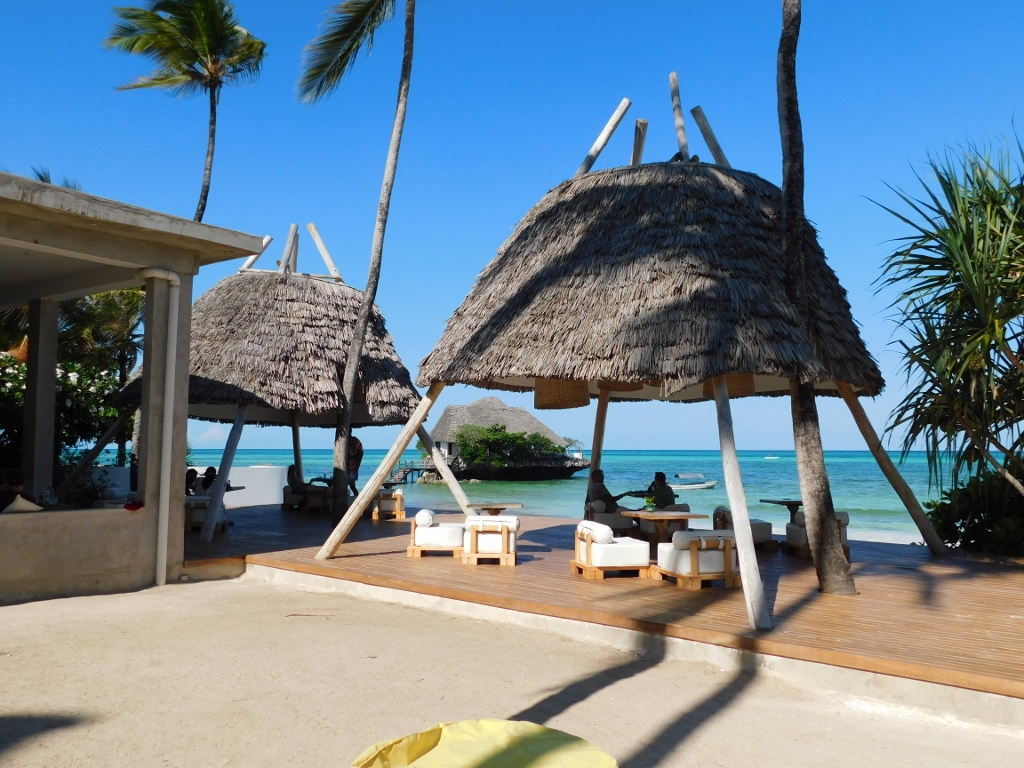 Hotel restaurant where we had lunch close to “The Rock” restaurant
Hotel restaurant where we had lunch close to “The Rock” restaurant
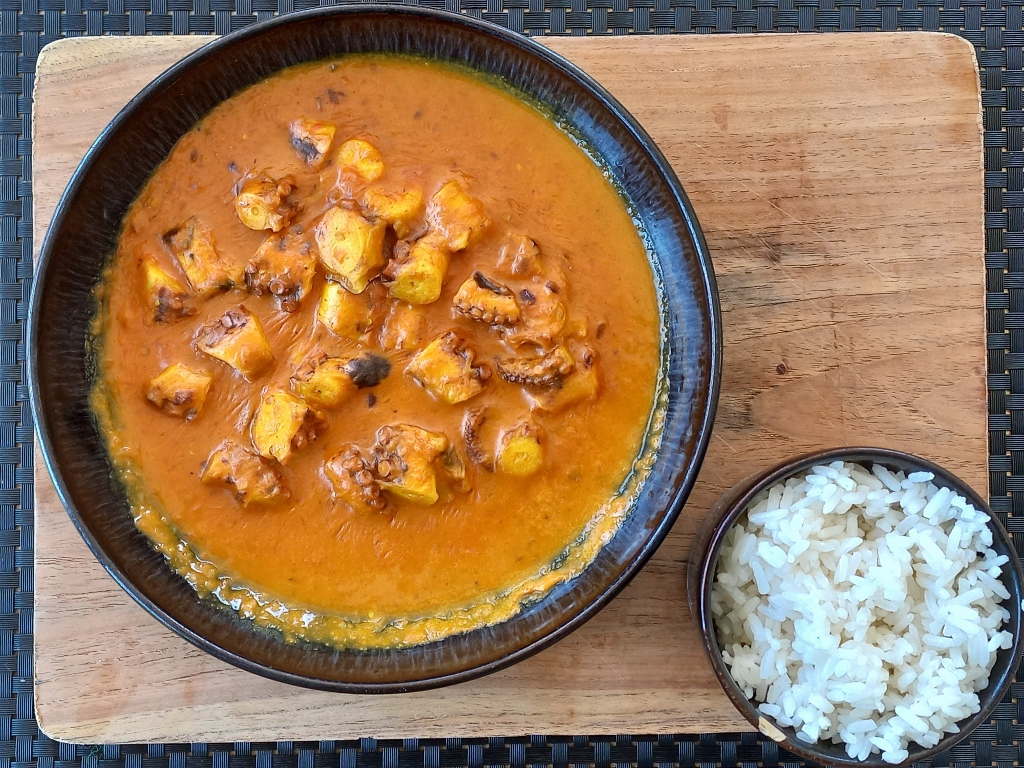 My lunch at the beach in the village of Pingwe
My lunch at the beach in the village of Pingwe
After this nice break, we walked a bit along a dirt and sand path between palm trees and other vegetation in order to get to our coach.
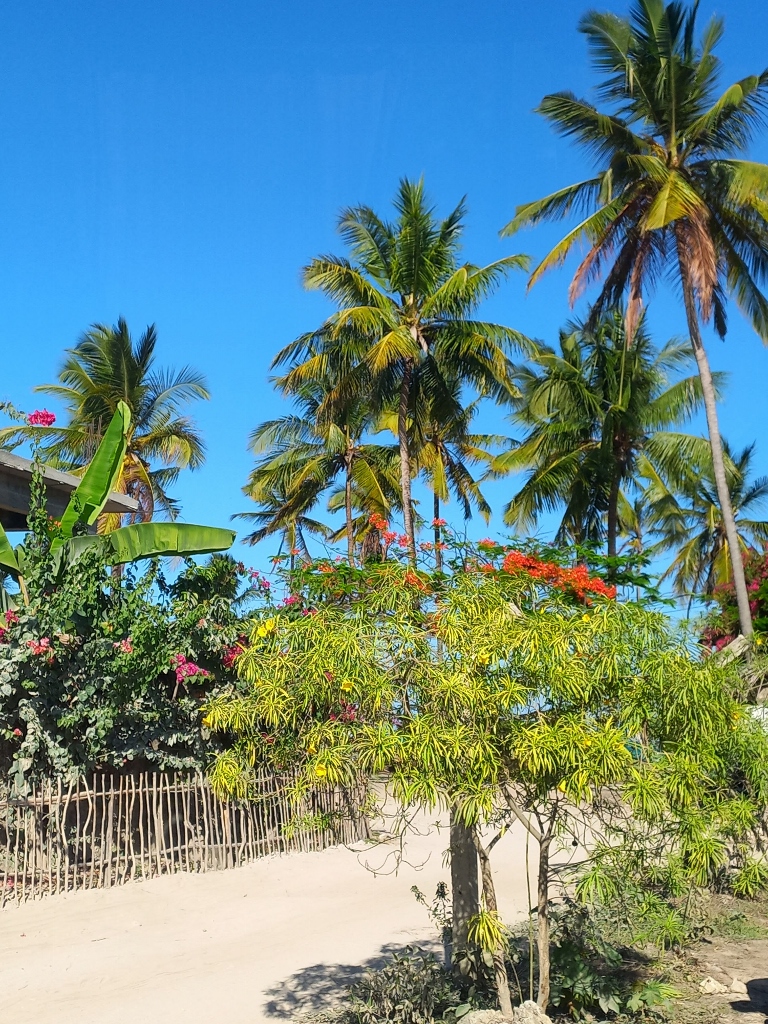 Detail from Pingwe village
Detail from Pingwe village
We didn’t drive for long now, we just crossed to the northwest side of the Michamvi peninsula and Kae Beach. In some places you can find that Kae is a village, but regardless of the existence of a certain number of houses, it is still only a tourist settlement with hotels and guesthouses, and all of this was built precisely because of the beach.
First, however, I found a hammock attached to two palm trees. I liked the view I had there.
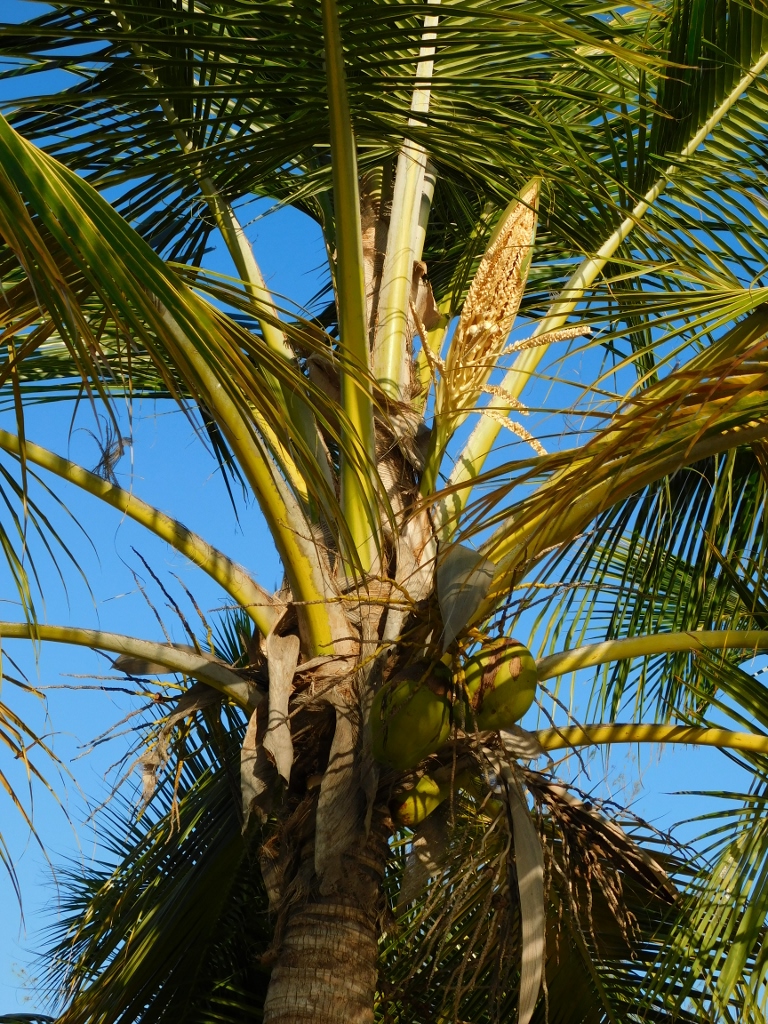 View at Kae beach
View at Kae beach
At some point I did get out of the hammock and went for a swim. After enjoying that activity, I got out and when my hands were dry, I went for a short walk along the beach, taking my camera with me.
With the other members of the group, I was here practically in a beach restaurant/bar and they had various decorations in addition to sun loungers and beach beds.
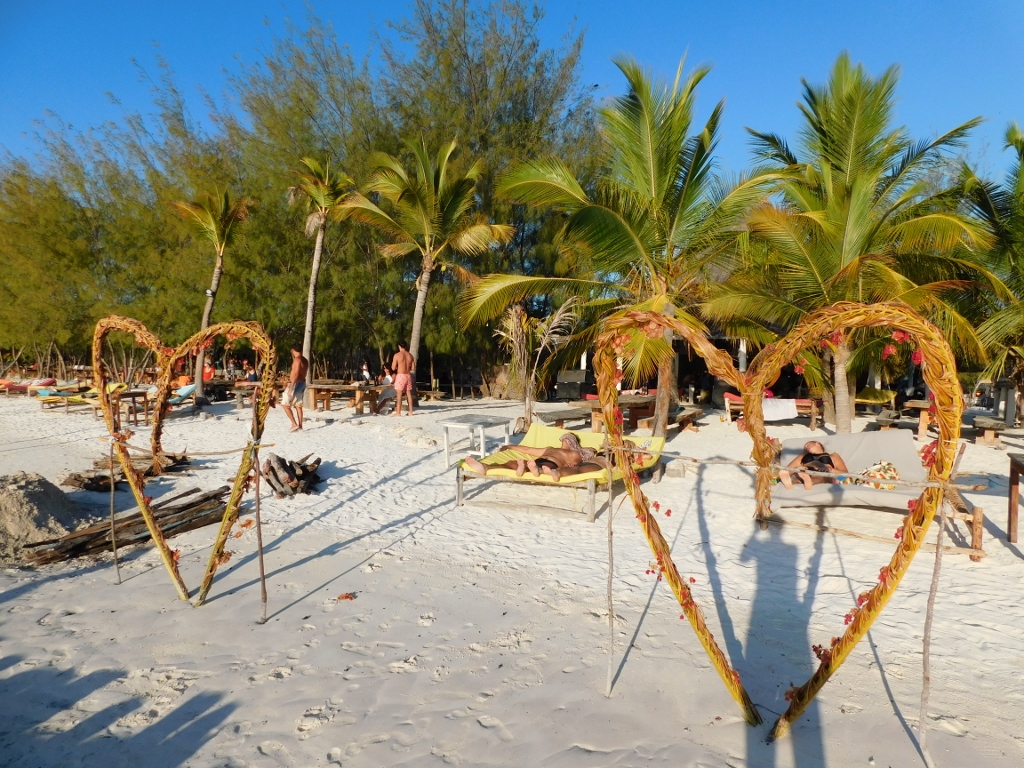 Kae Beach
Kae Beach
Kae Beach is located on the shore of the shallow Chwaka Bay and the water there is even warmer than in the other places on the island of Unguja. By the way, as a reminder – the island of Unguja is usually called Zanzibar, which is actually the name of the entire archipelago of which Unguja is a part. I don’t know how pronounced the difference between the high and low tides is here, but on the part of the beach where I was stationed, there were short wooden poles driven into the sand and behind them numerous sandbags. This is probably how that part of the beach is protected from too high a tide.
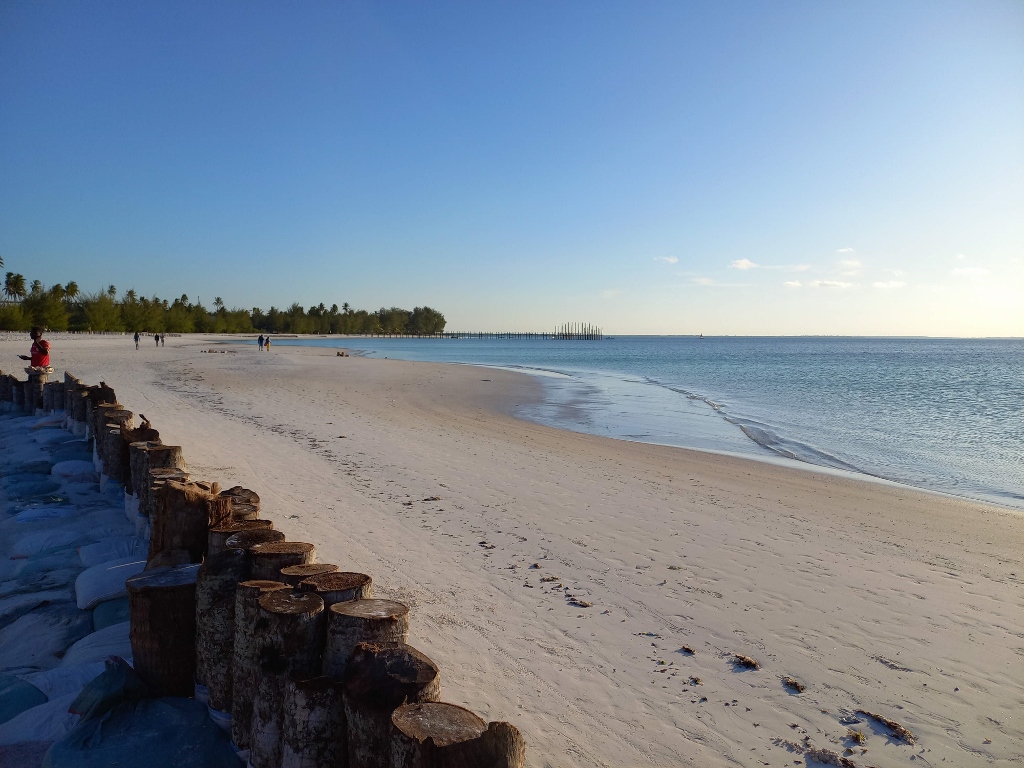 Kae Beach
Kae Beach
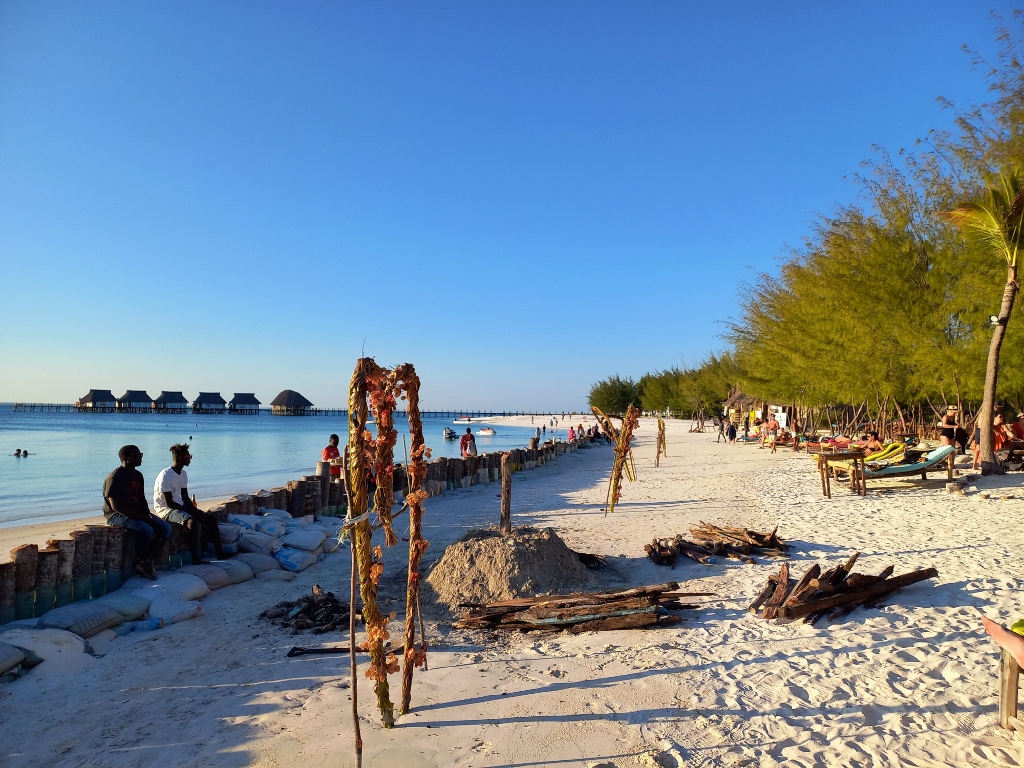 Kae Beach
Kae Beach
I headed towards the northern part of the beach and from there I had an excellent view of almost the entire stretch.
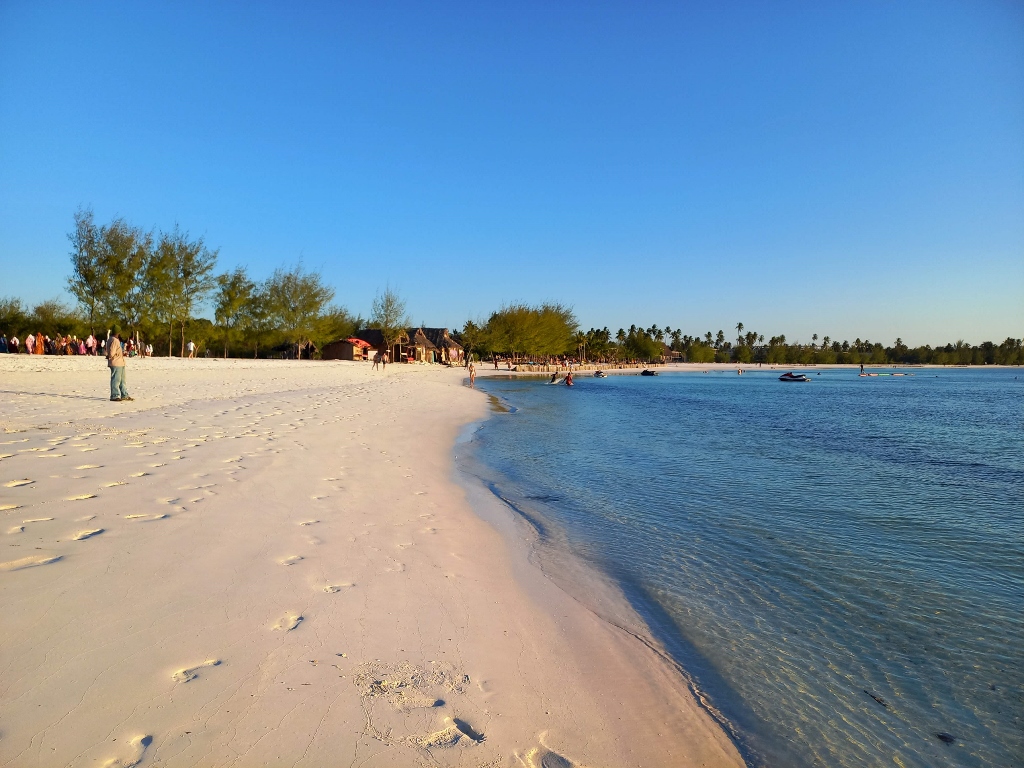 Kae Beach
Kae Beach
But, what made the greatest impression on me was the sand that was as fine as soft flour.
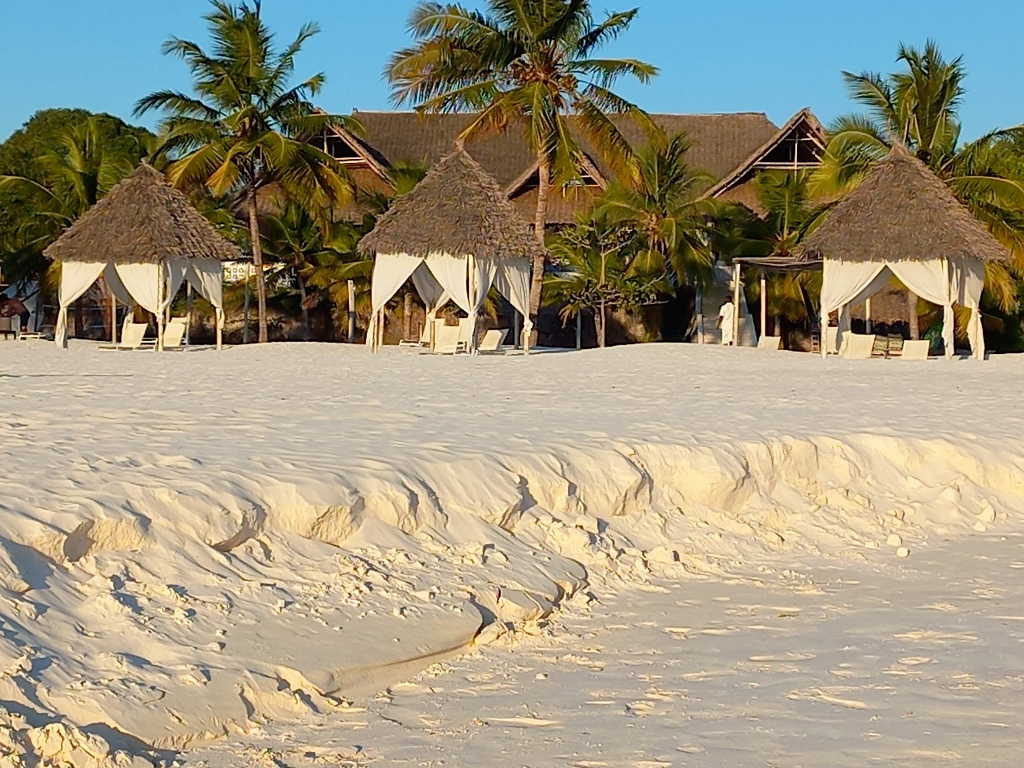 Kae Beach
Kae Beach
After this nice and pleasant walk, I returned to the part of the beach where there was a restaurant/bar where we practically stayed and there I calmly and happily waited for the sunset.
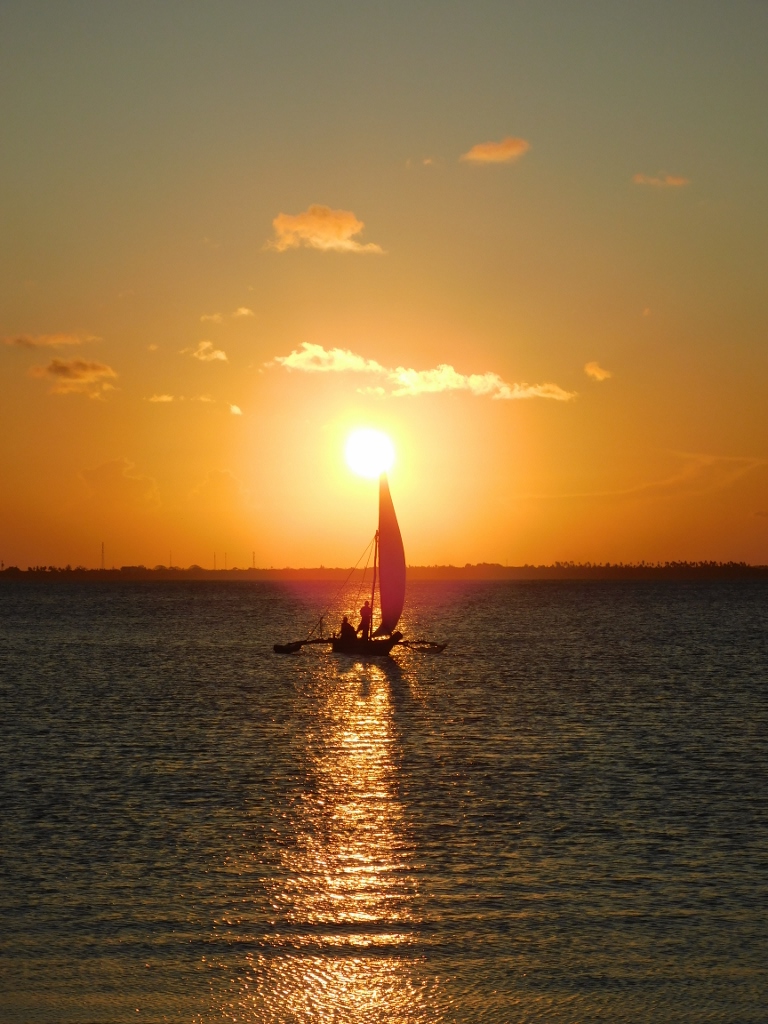 Kae Beach
Kae Beach
As the day drew to a close, various boats started to return from somewhere, probably from some excursions, bringing tourists back to the shore.
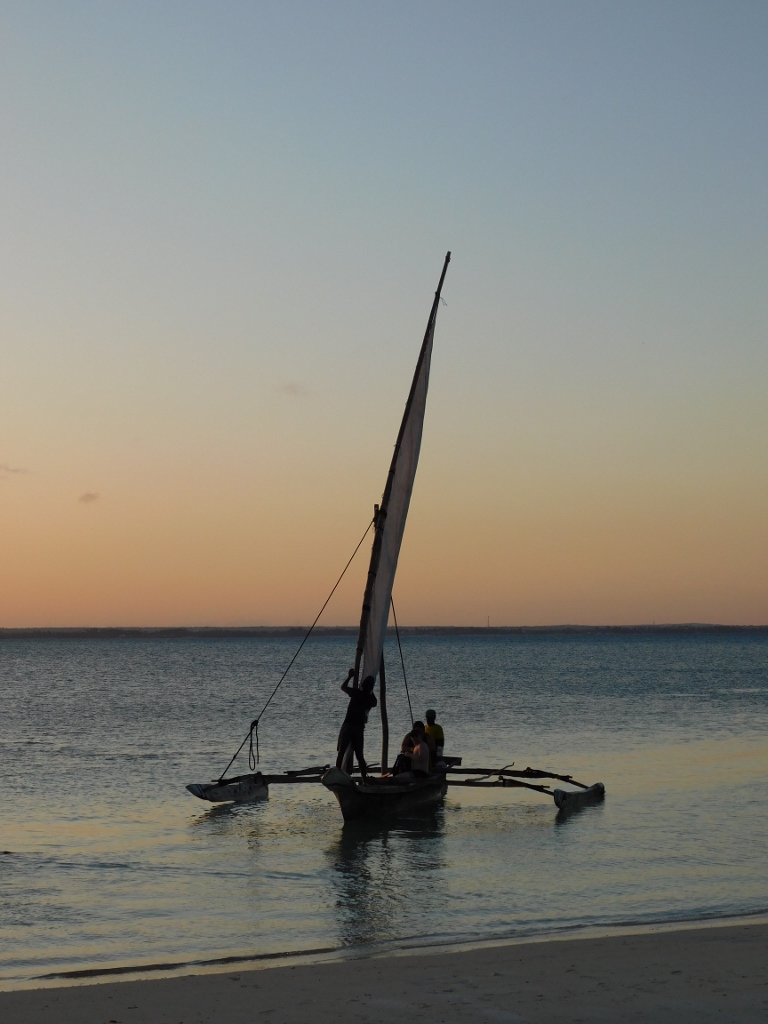 Kae Beach
Kae Beach
Needless to say, I was not the only one who enjoyed the ending of the day, but there were also people who just walked on the beach or hanged out there with friends.
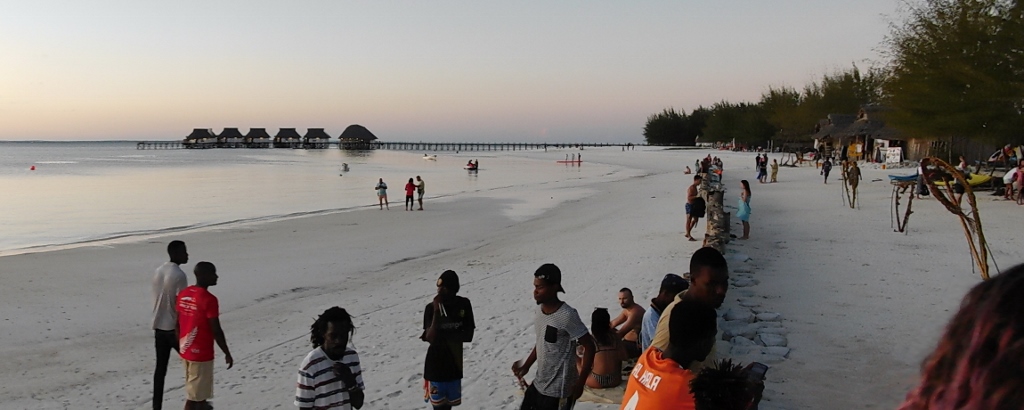 Kae Beach
Kae Beach
When the sun went down, everything was still beautiful and seemed peaceful, the temperature was perfect and I was enjoying myself intensely. I was so amazed by the scene that I even made an upright panorama.
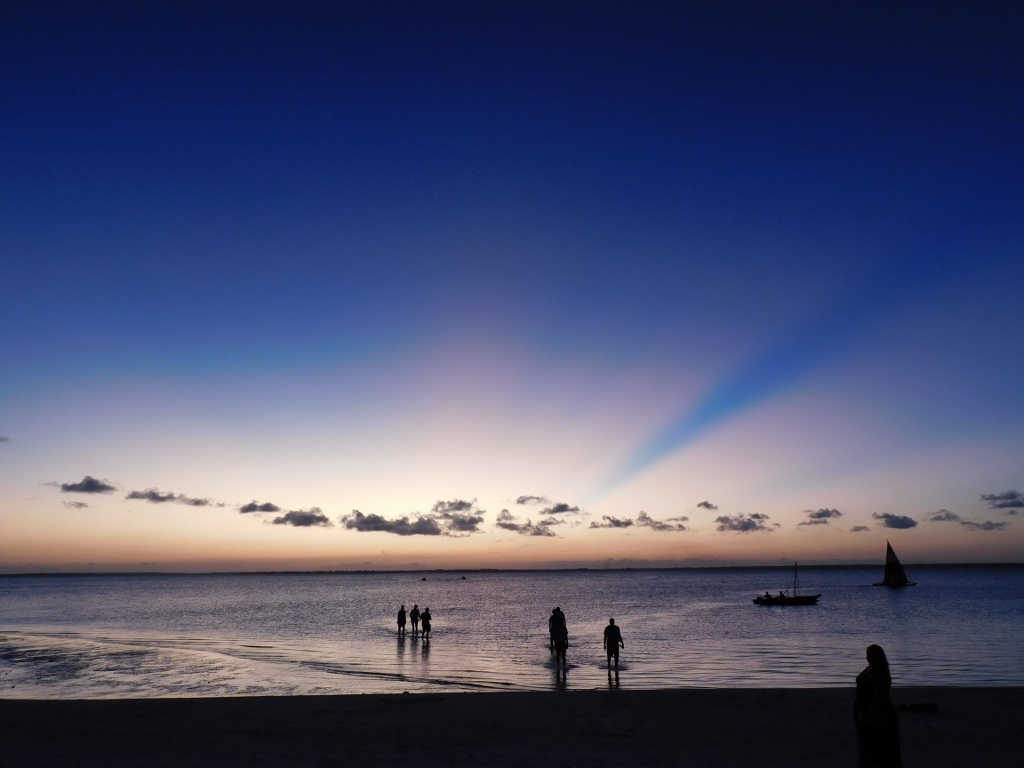 Kae Beach
Kae Beach
 Kae Beach
Kae Beach
Meanwhile, on the beach, next to those heart figures, they made a bonfire, which was then lit once the sun was out of the picture. The party could start...
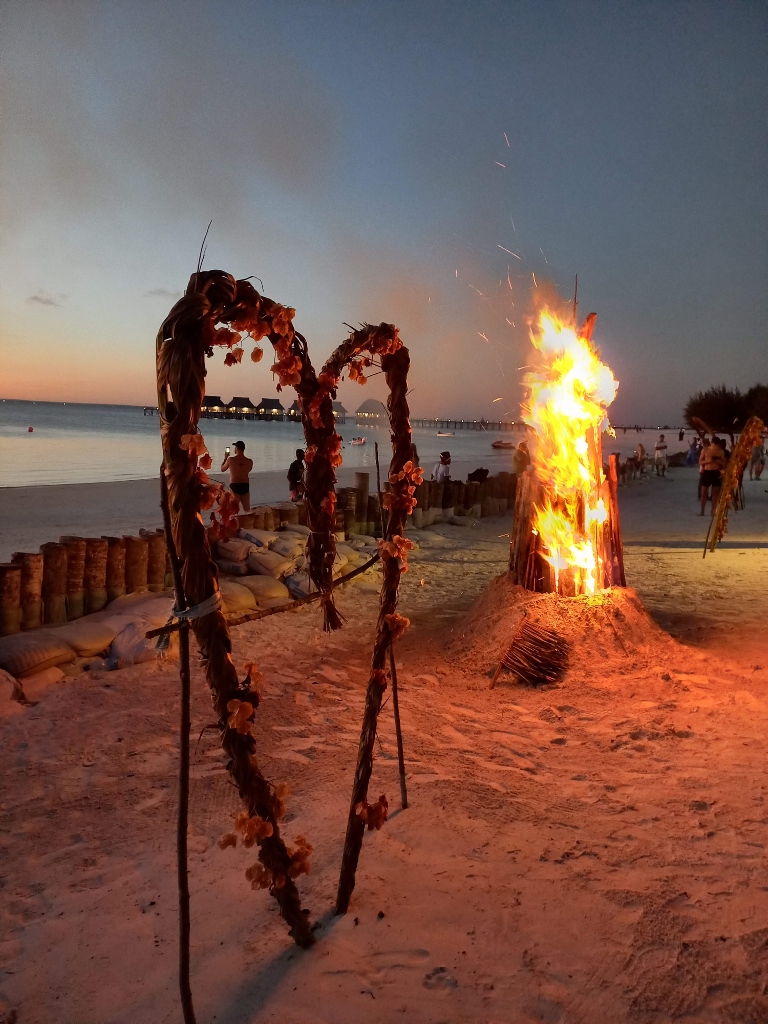 Kae Beach
Kae Beach
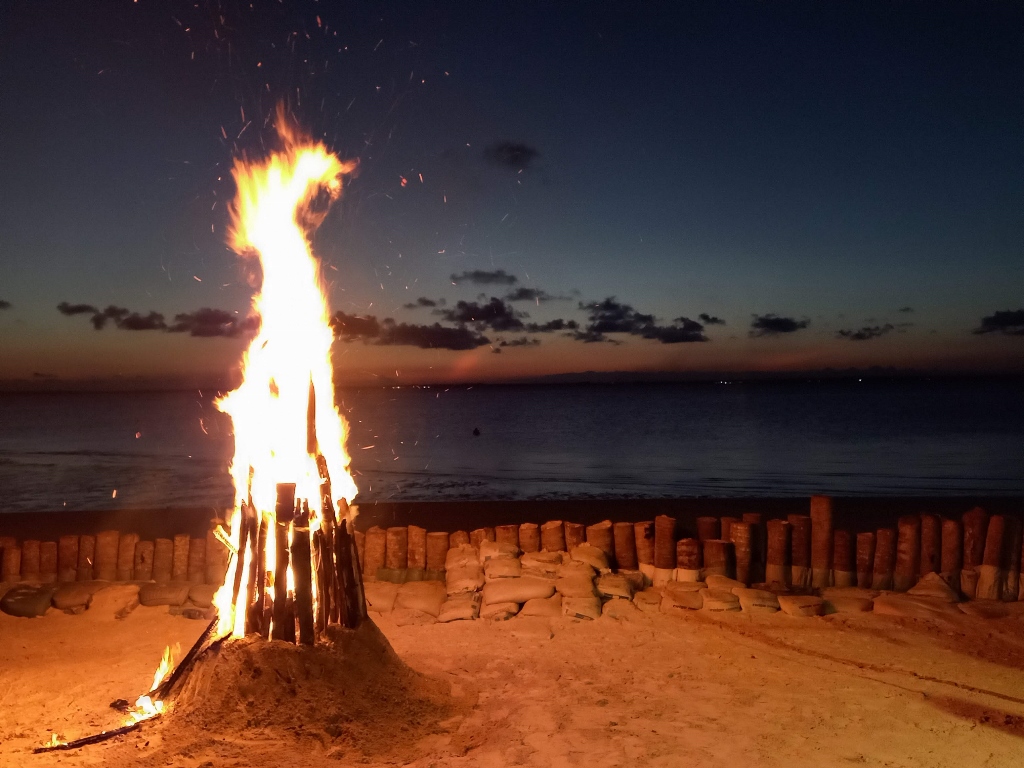 Kae Beach
Kae Beach
Outside the restaurant/bar, on a small plateau, a group of local youths were showing off their gymnastic-acrobatic skills, which is quite common in Zanzibar. On practically all the beaches with many hotels and restaurants, you can see groups of young men like this who perform their routines during the day along some rather loud music. For some reason, I did not find this too interesting, although the guys were certainly skilled, strong and flexible... It was the same here. When the “show” was over, the visitors had a party on that plateau and it was quite merry.
All in all, I was also quite happy and satisfied, but I preferred to continue to sit on the beach and watch the sea and the sky. In the meantime, the fire had died down.
 Kae Beach
Kae Beach
On the other hand, it’s not like I didn’t relax completely. On the contrary, apart from sitting on the beach and occasionally taking photos, I also danced on my own account when I felt like it. And I also took care of the hydration. Here comes a photo of the first beer. With the second one, I was way too relaxed to take any photos.
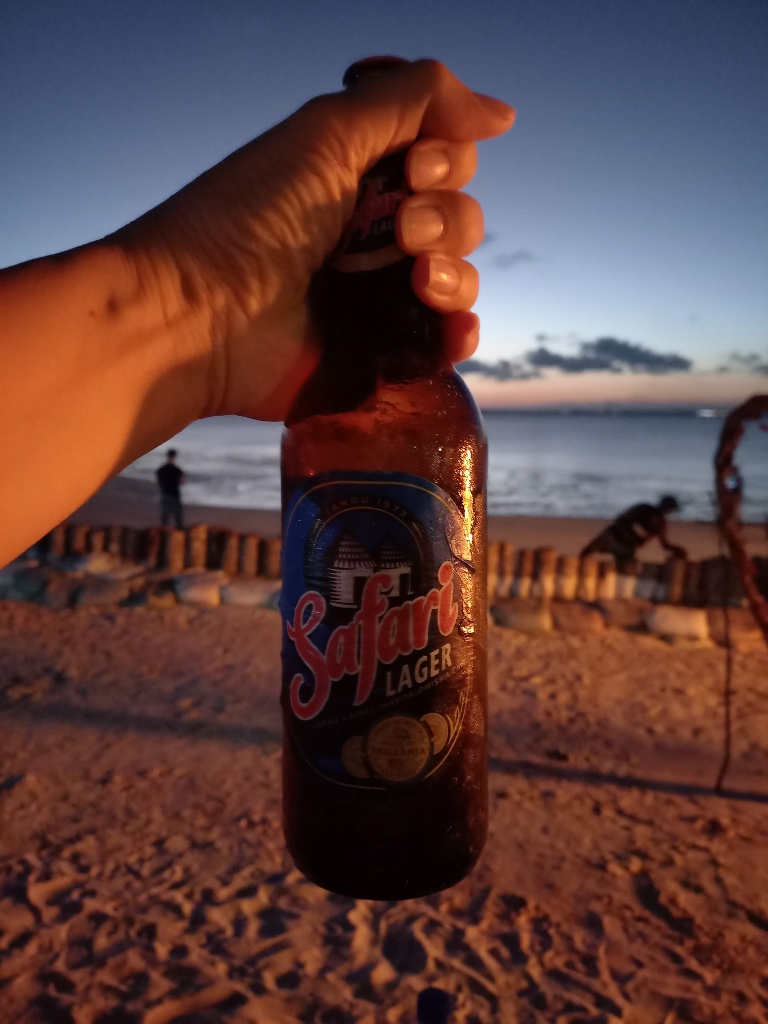 Kae Beach
Kae Beach
This was yet another wonderful day in Zanzibar.